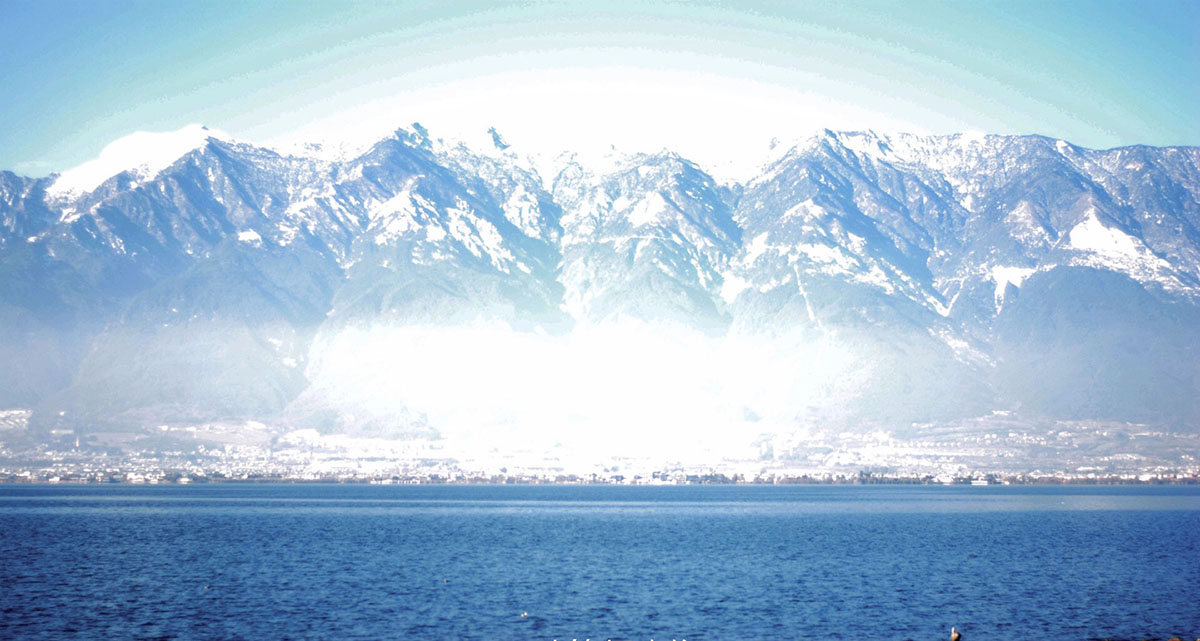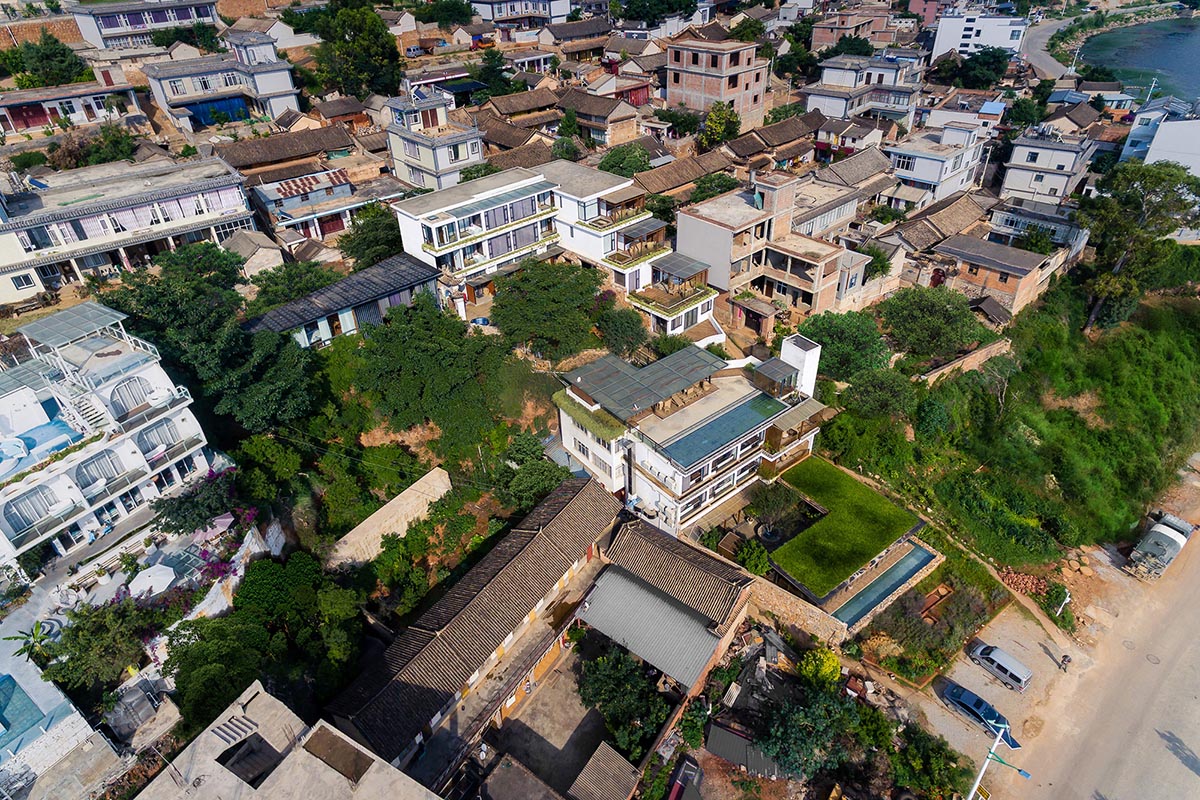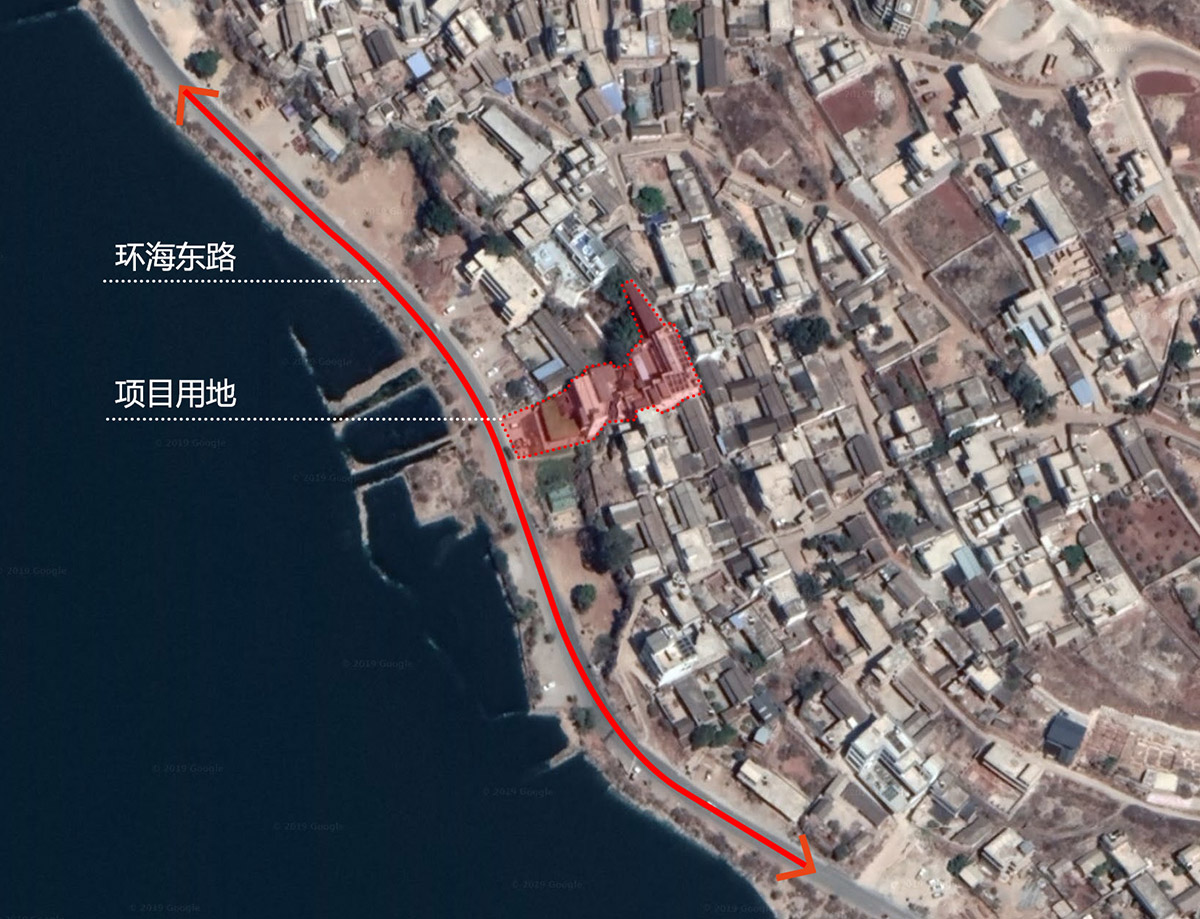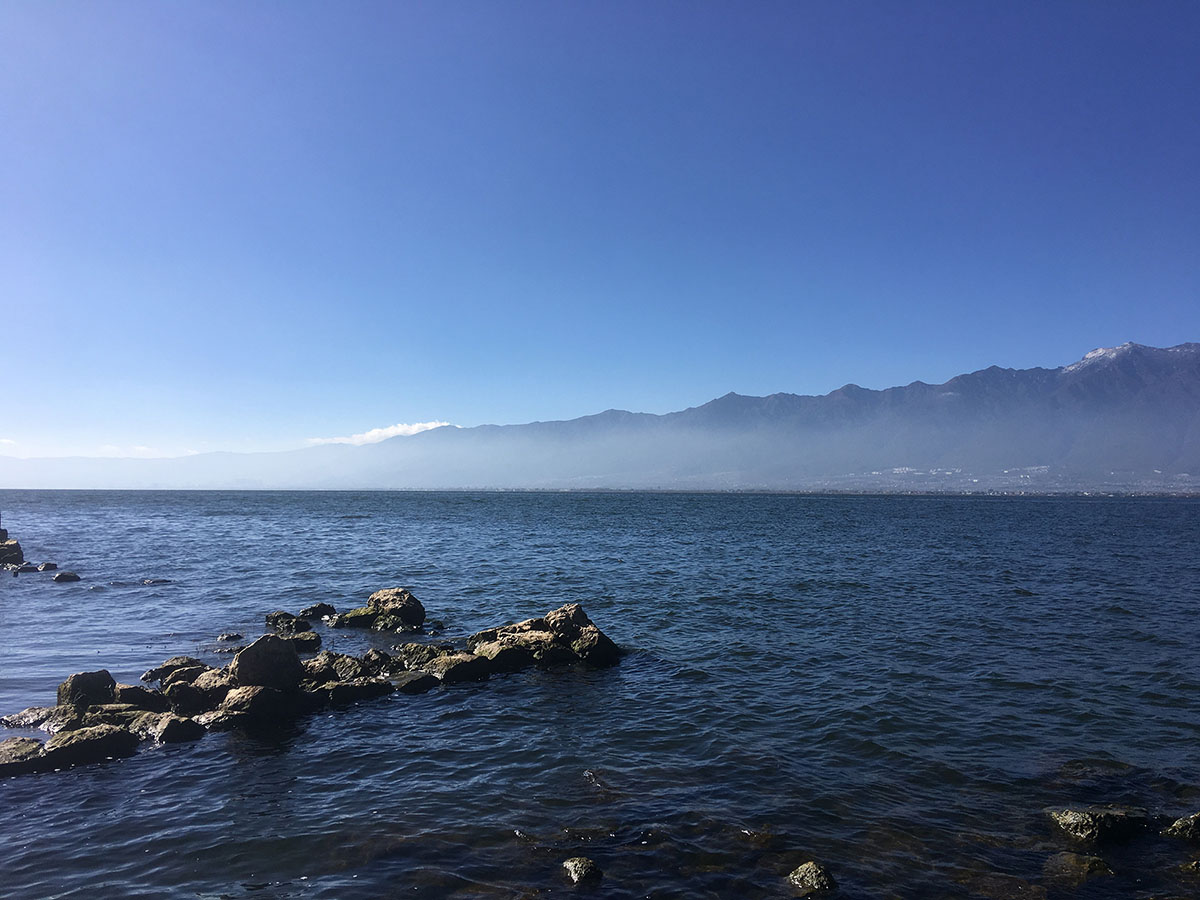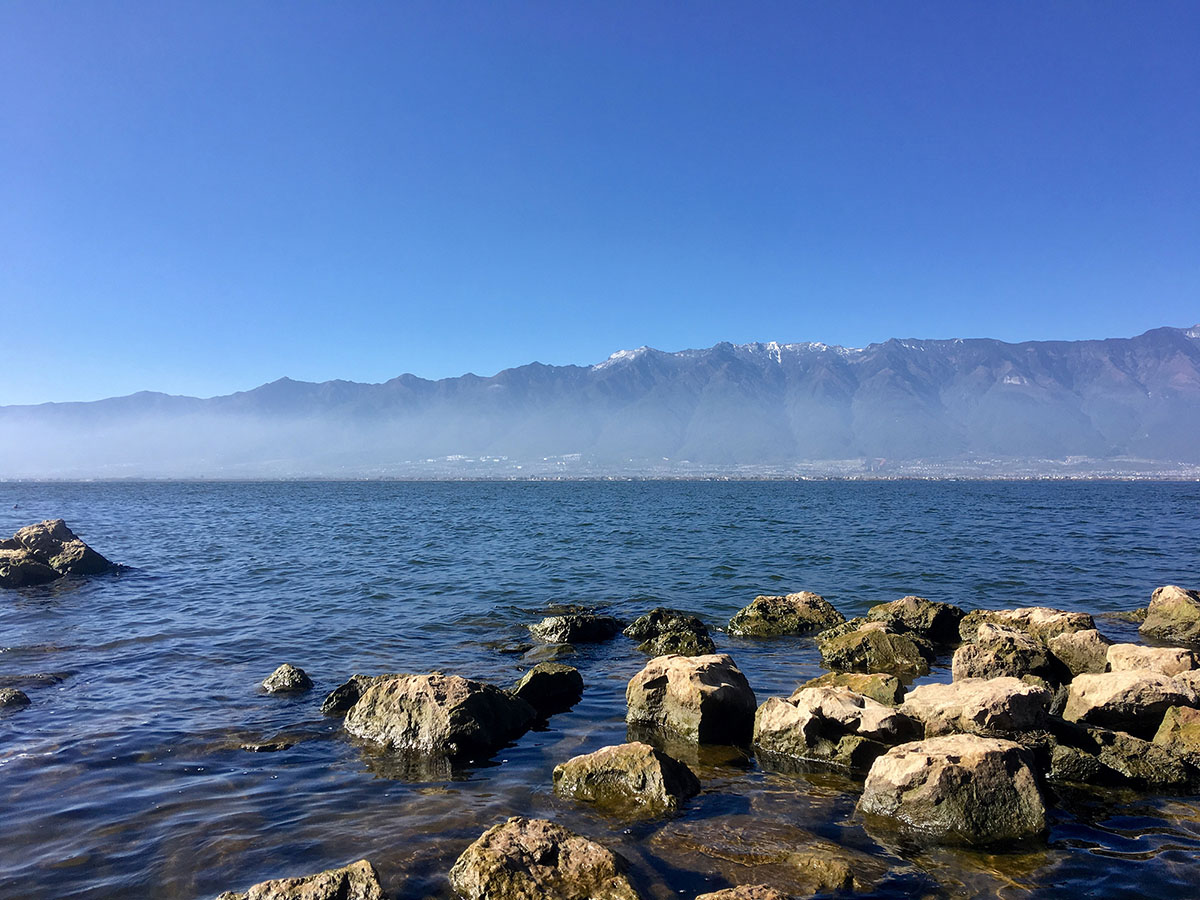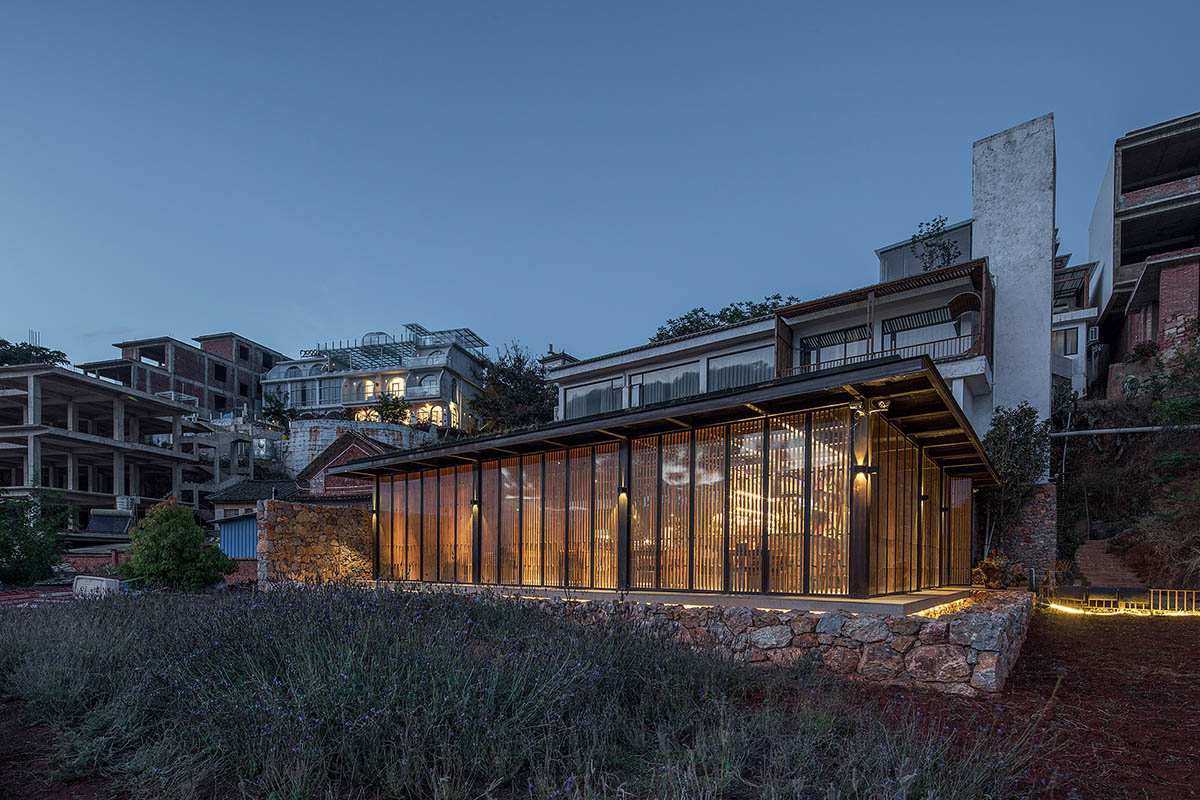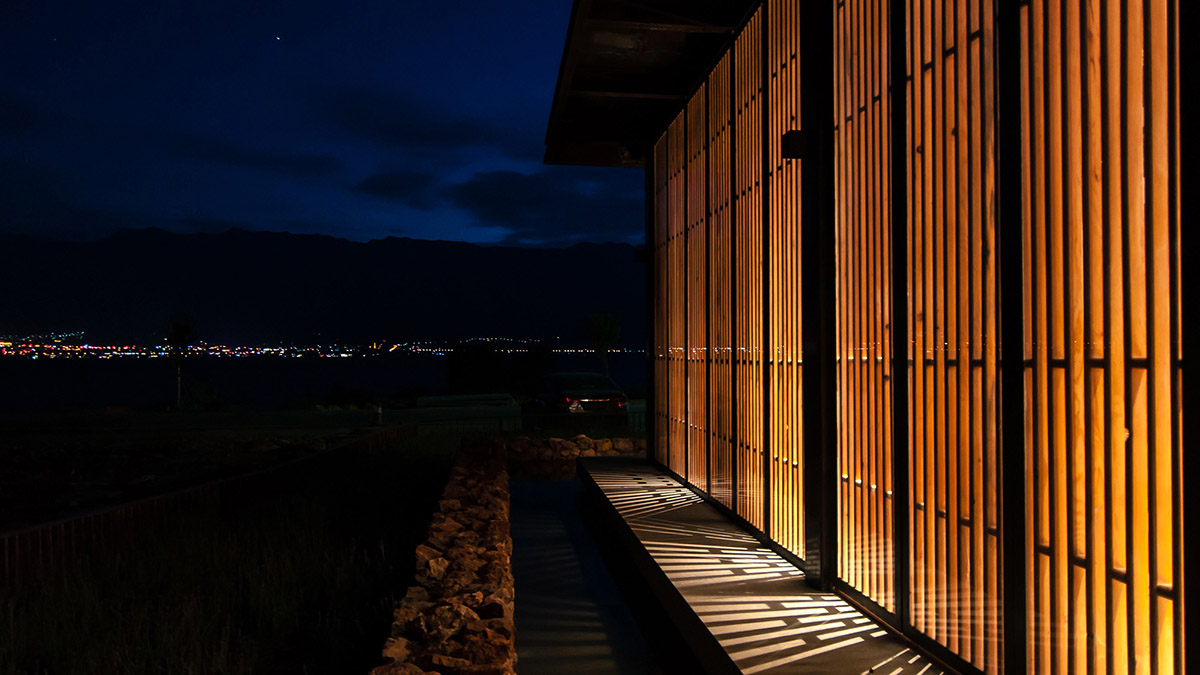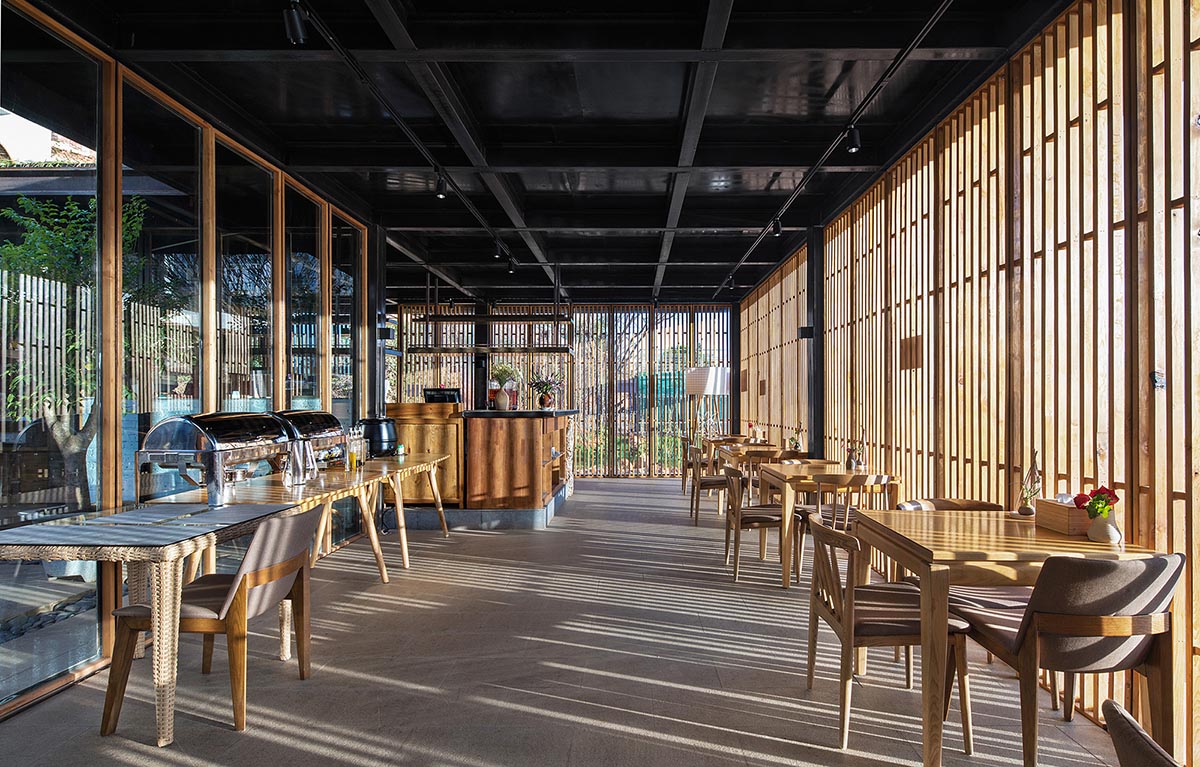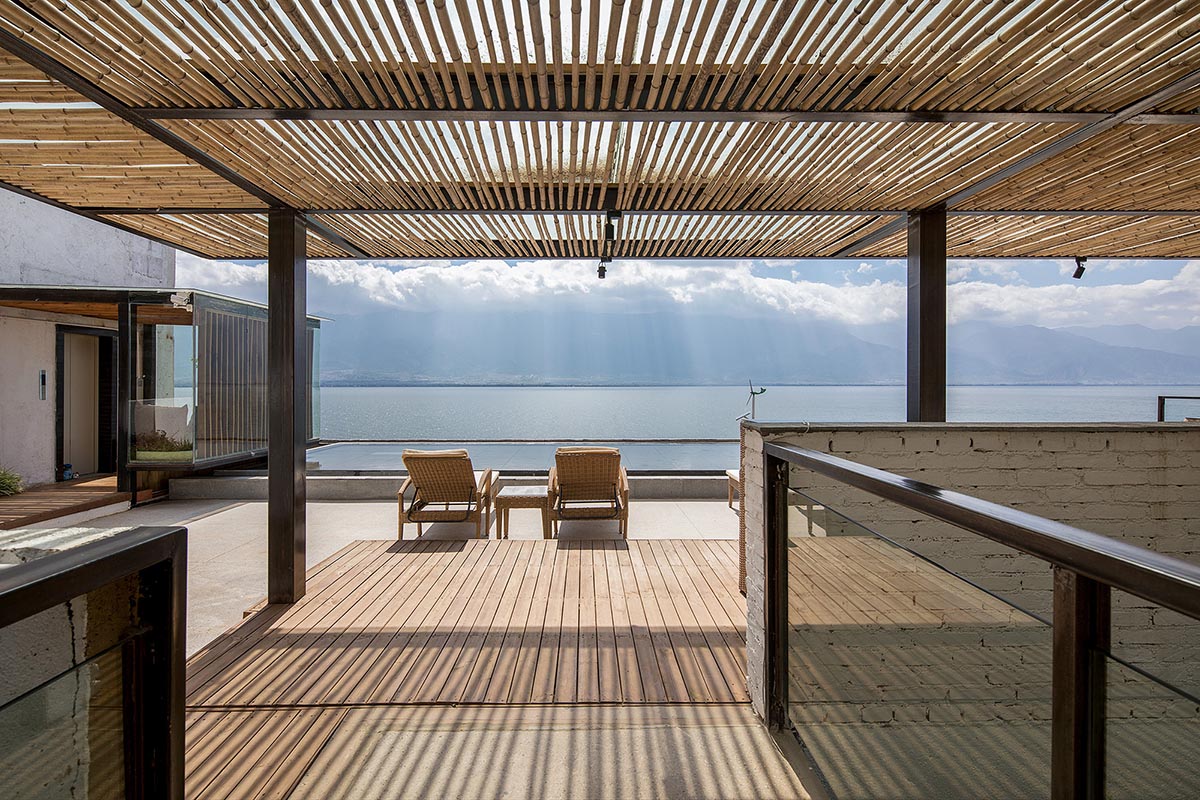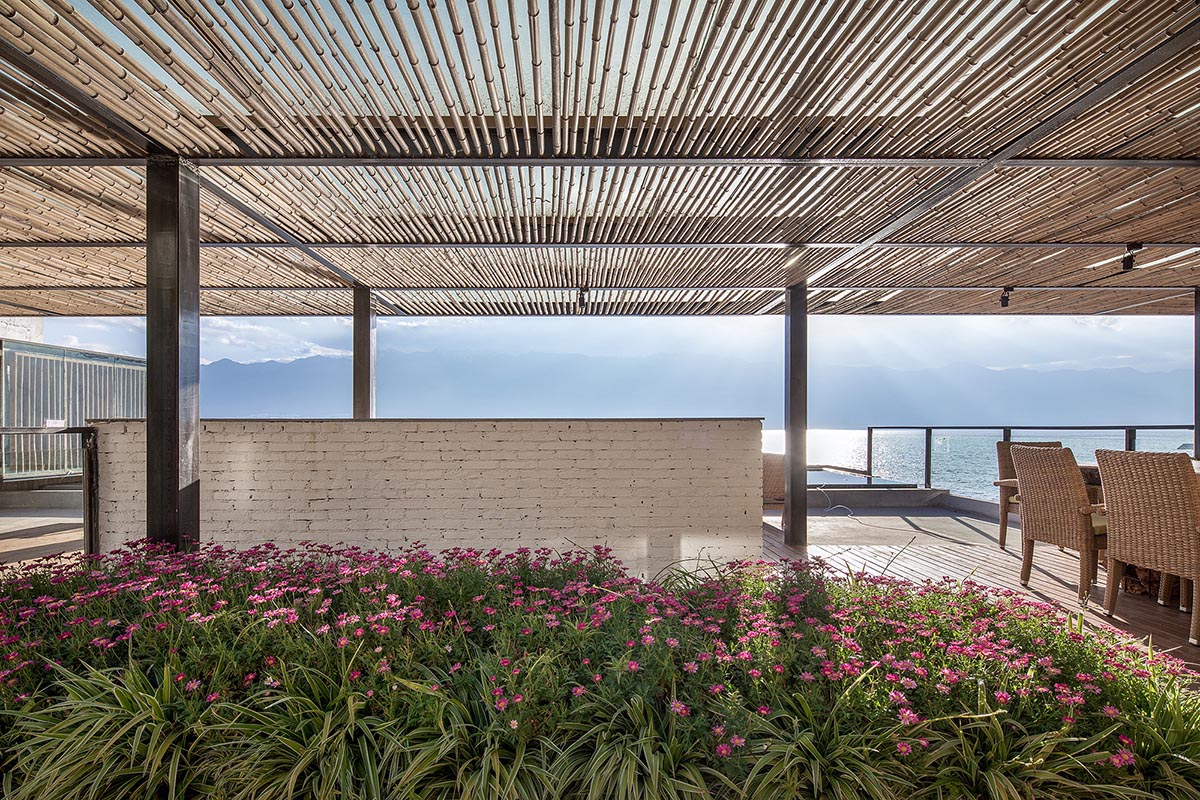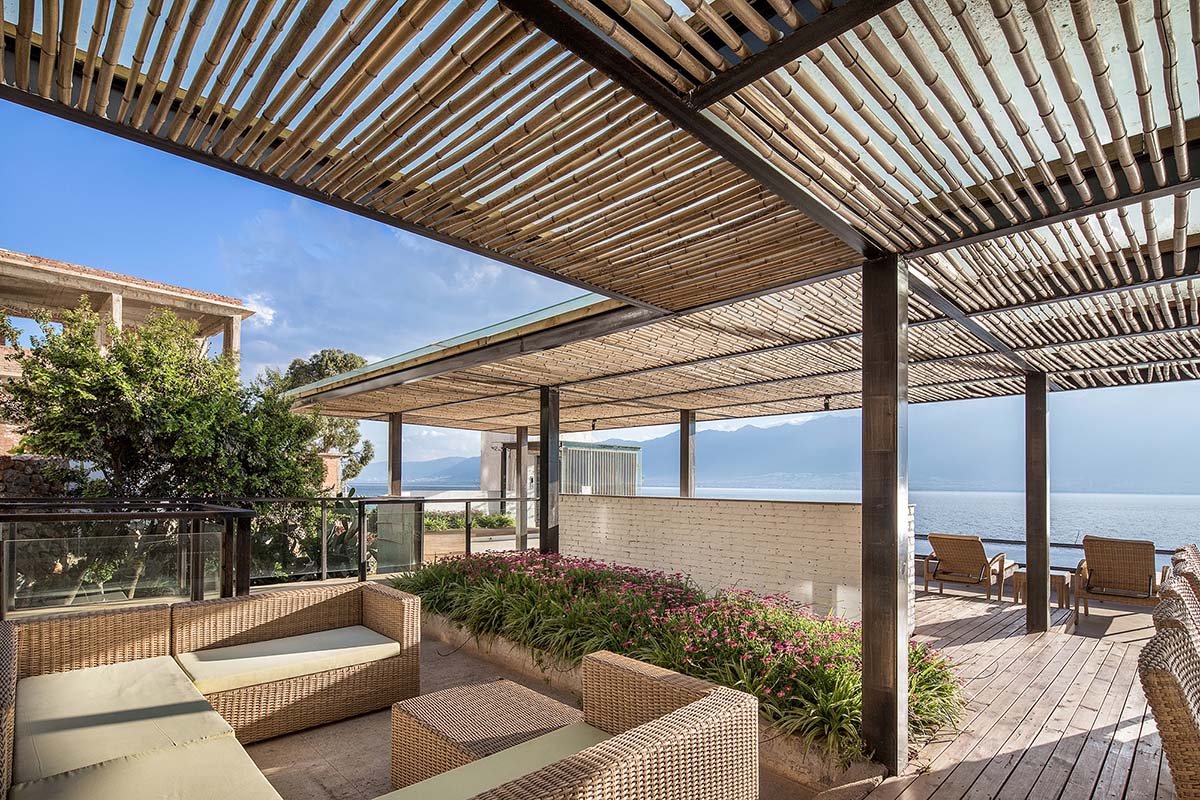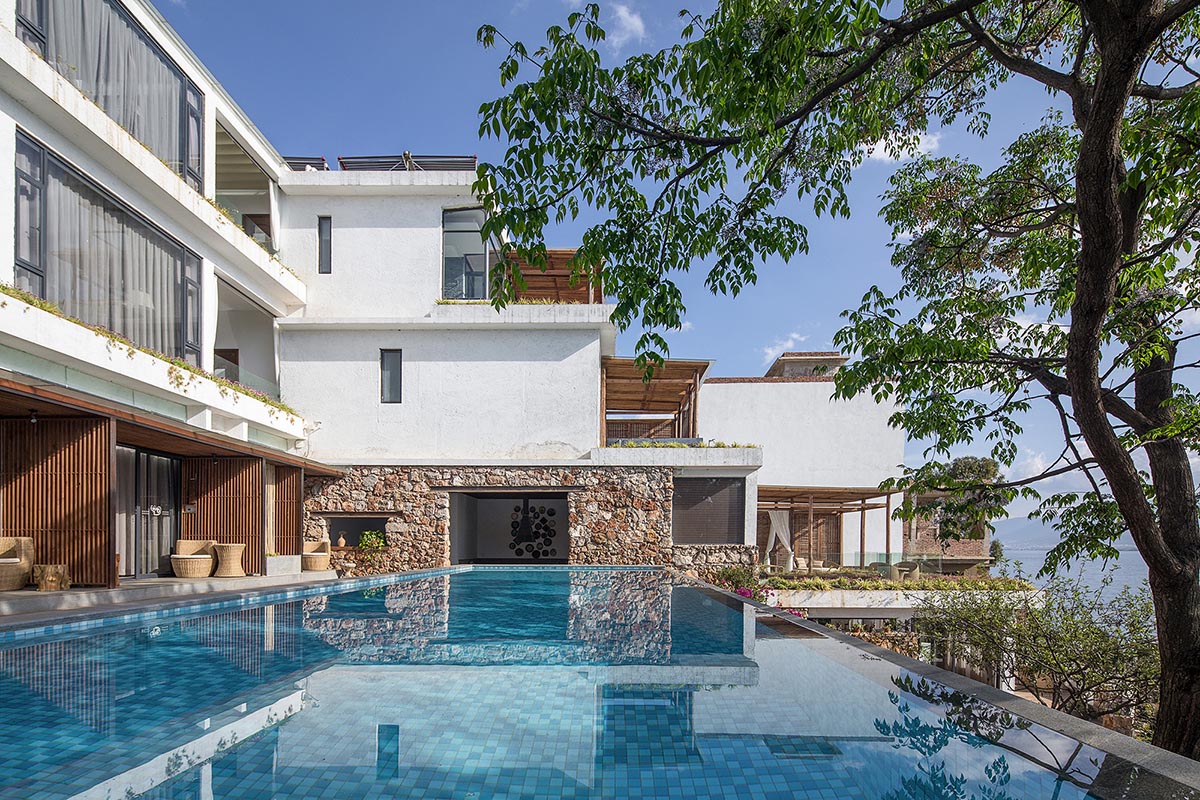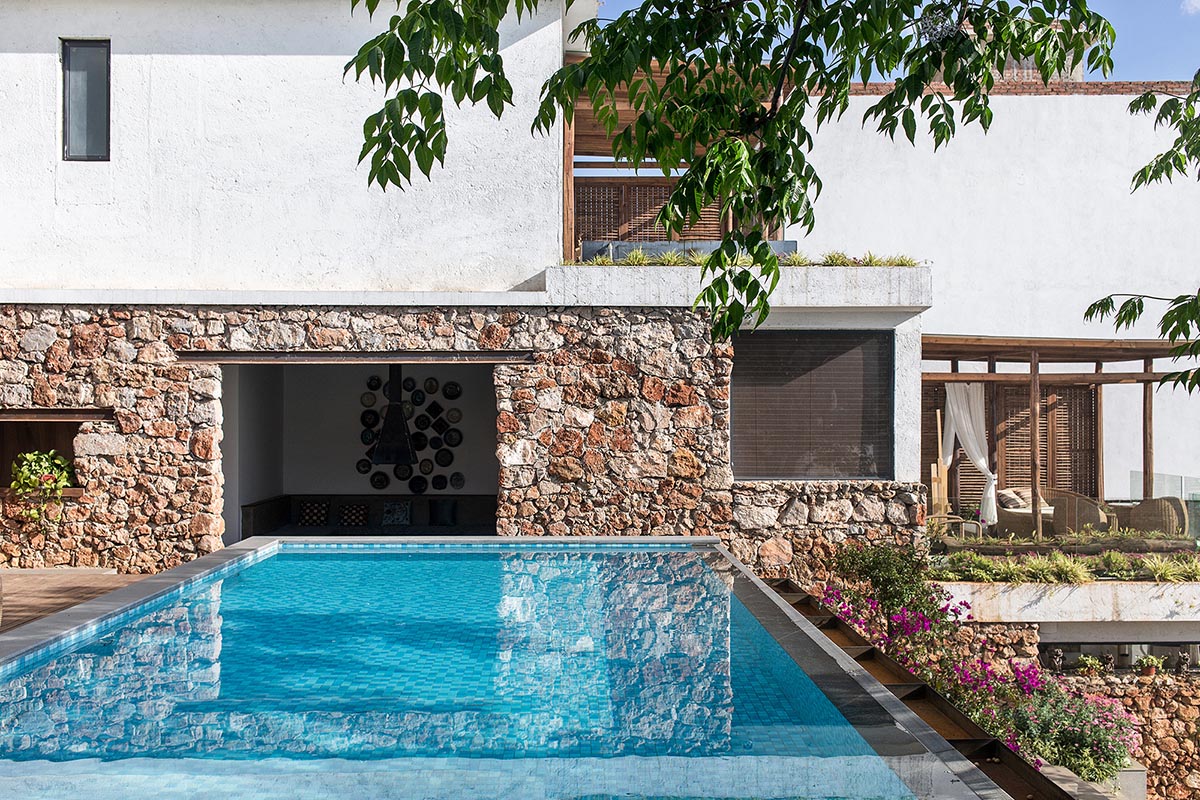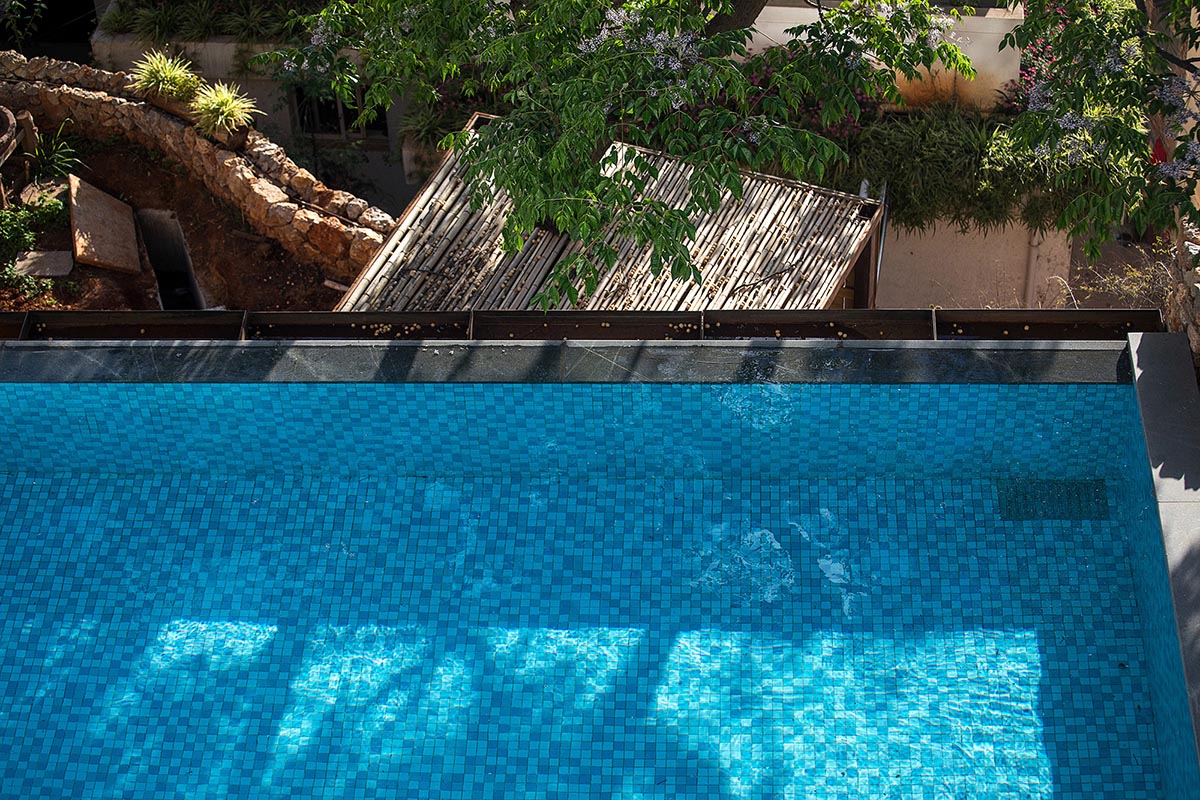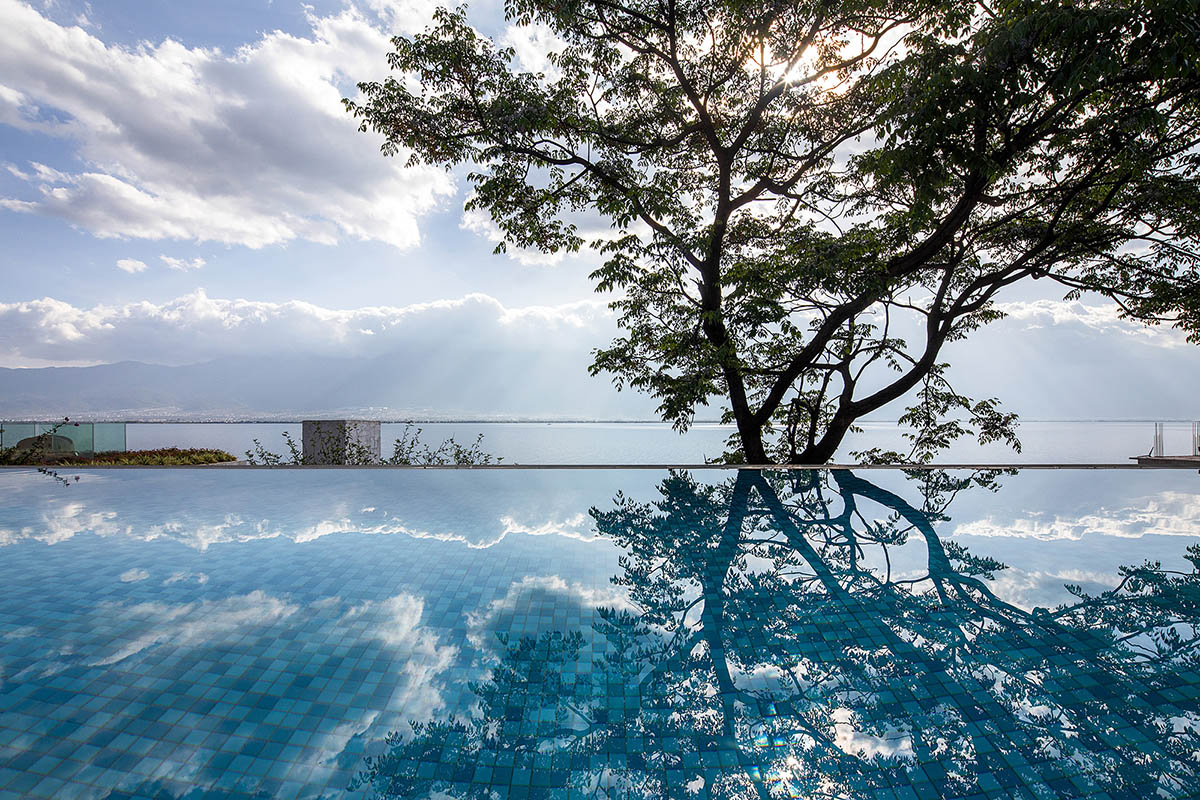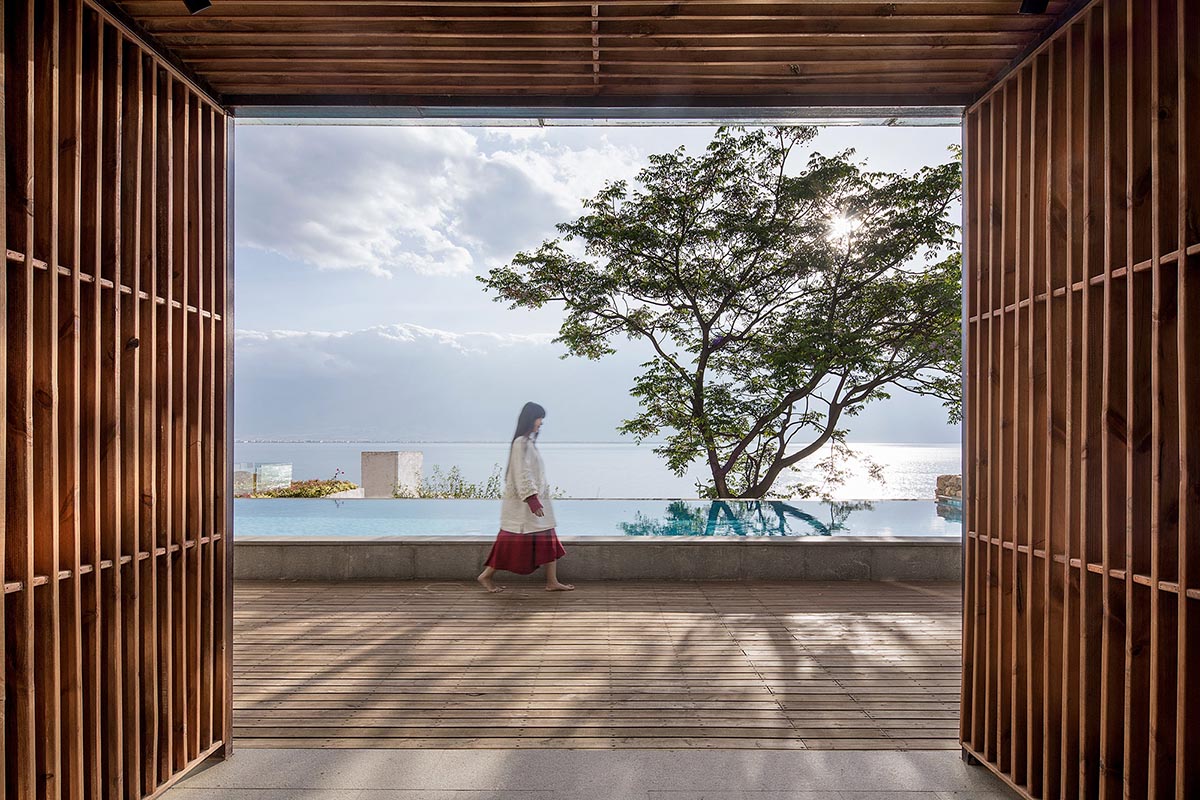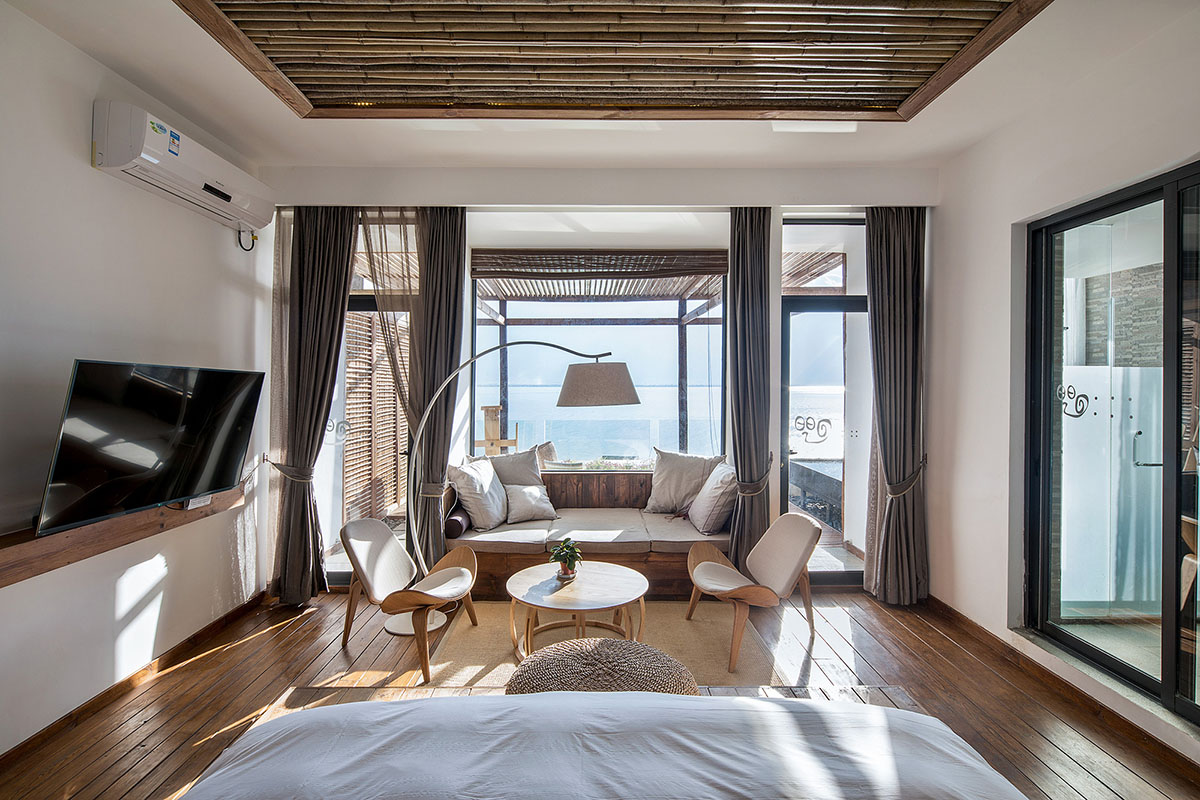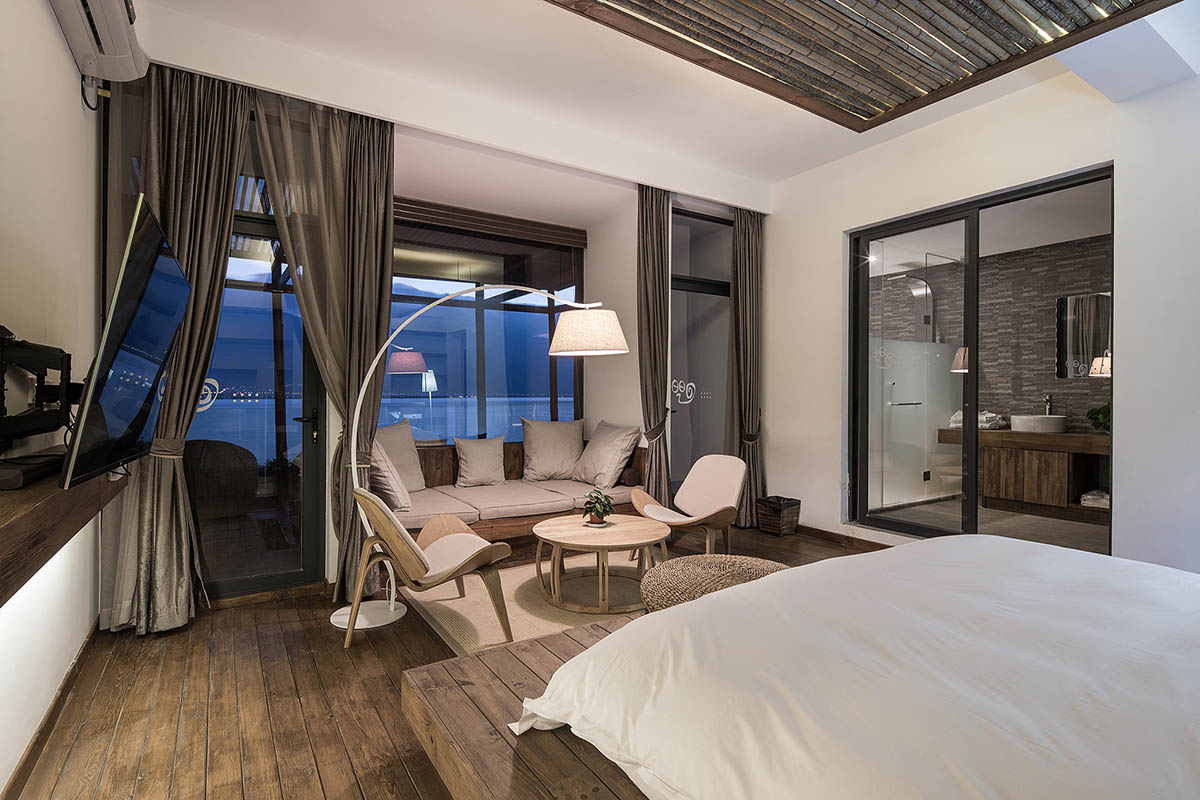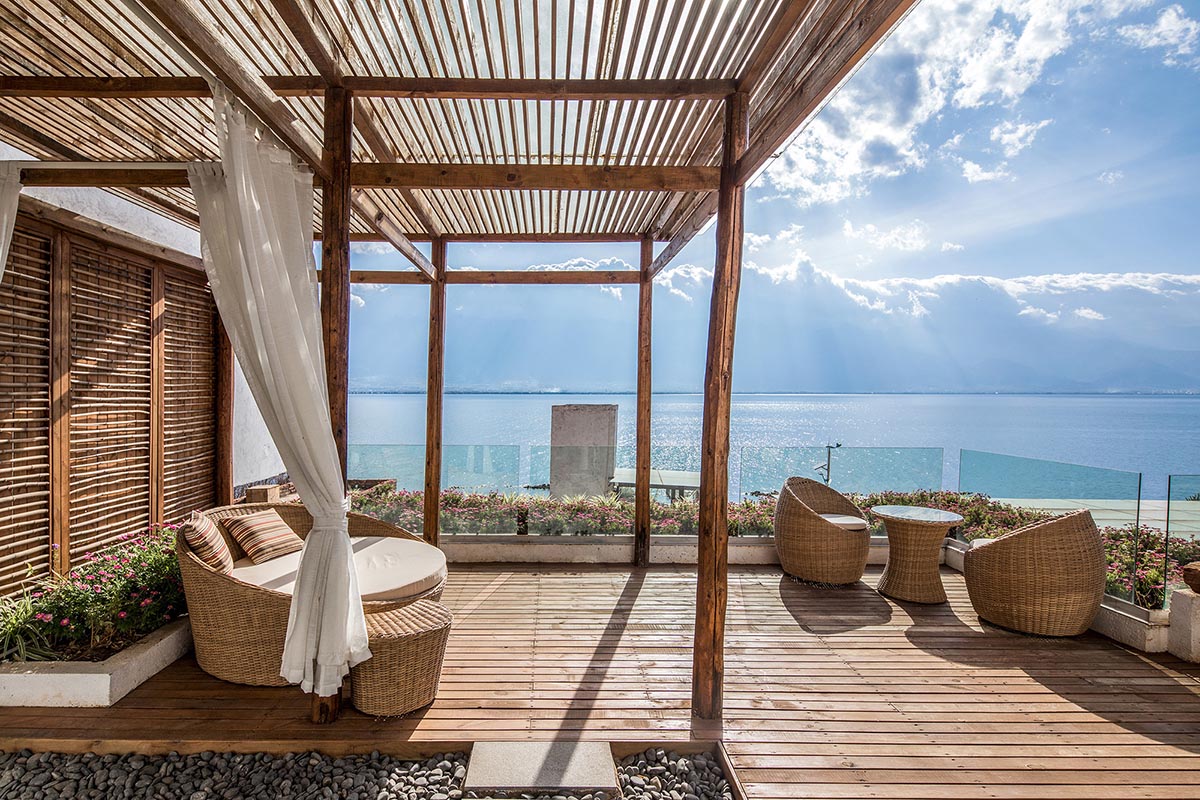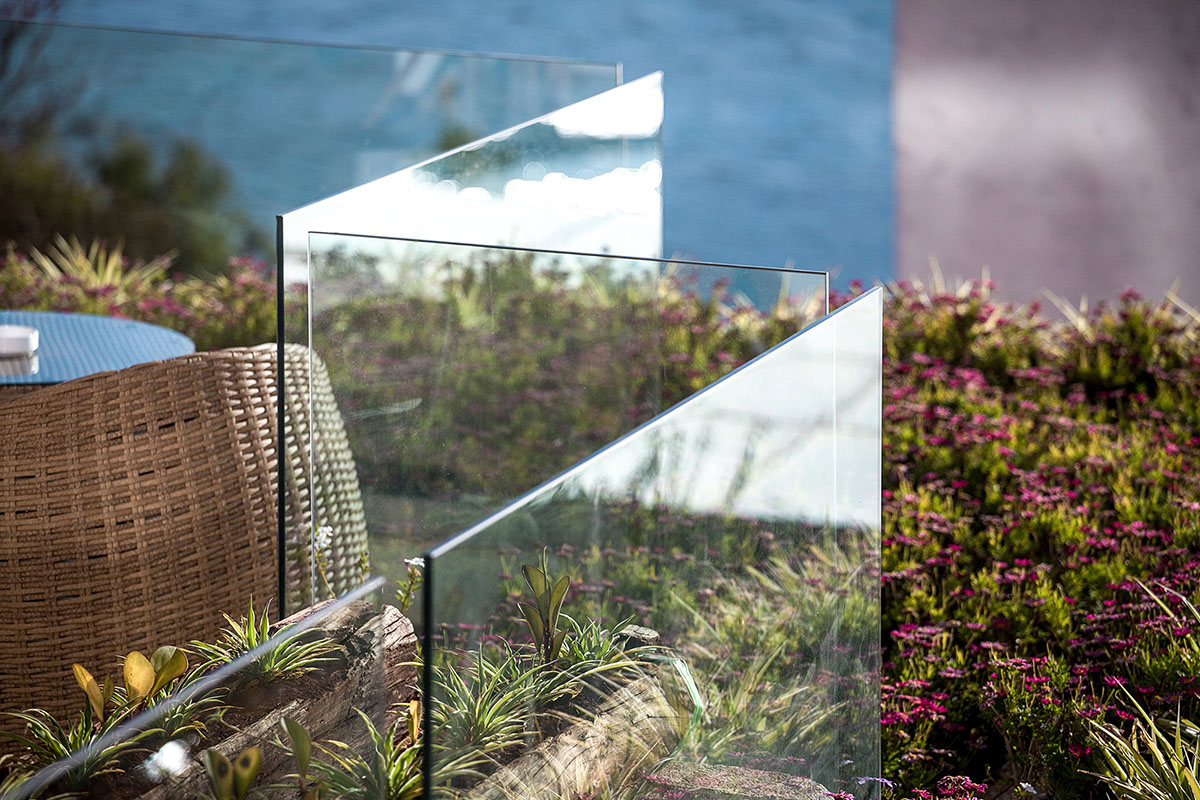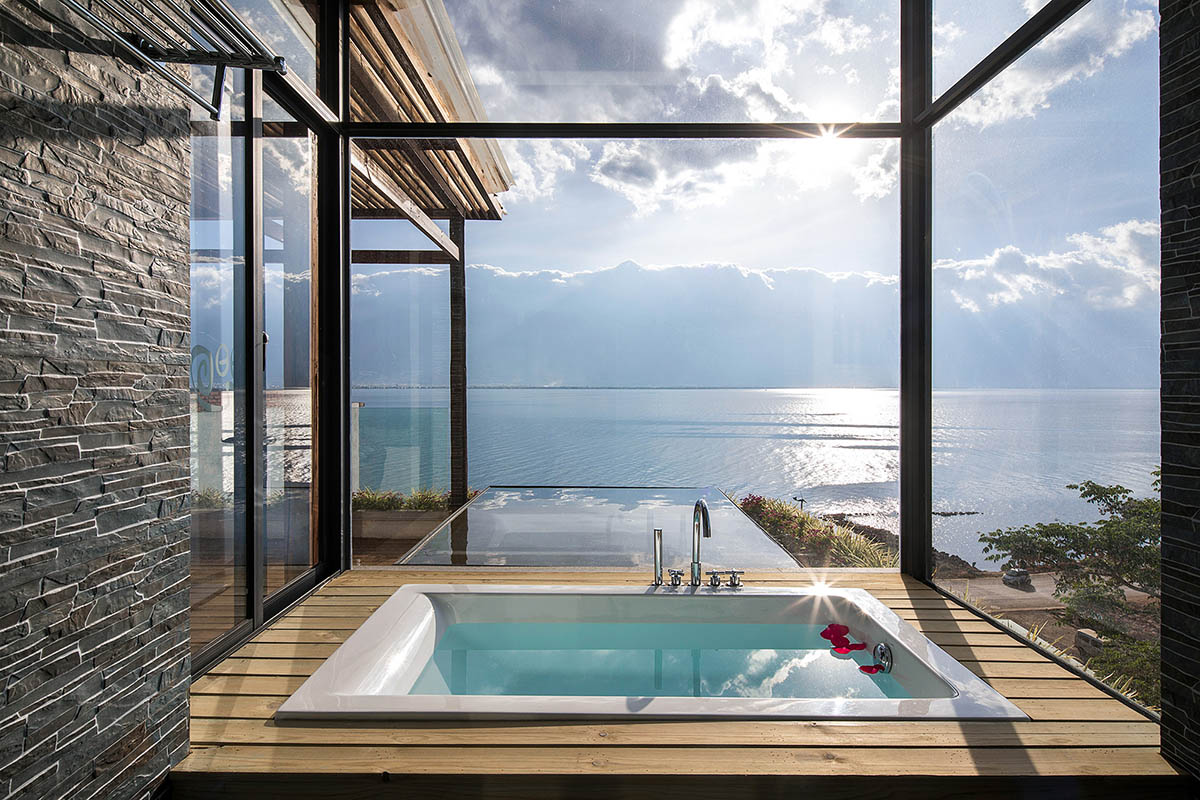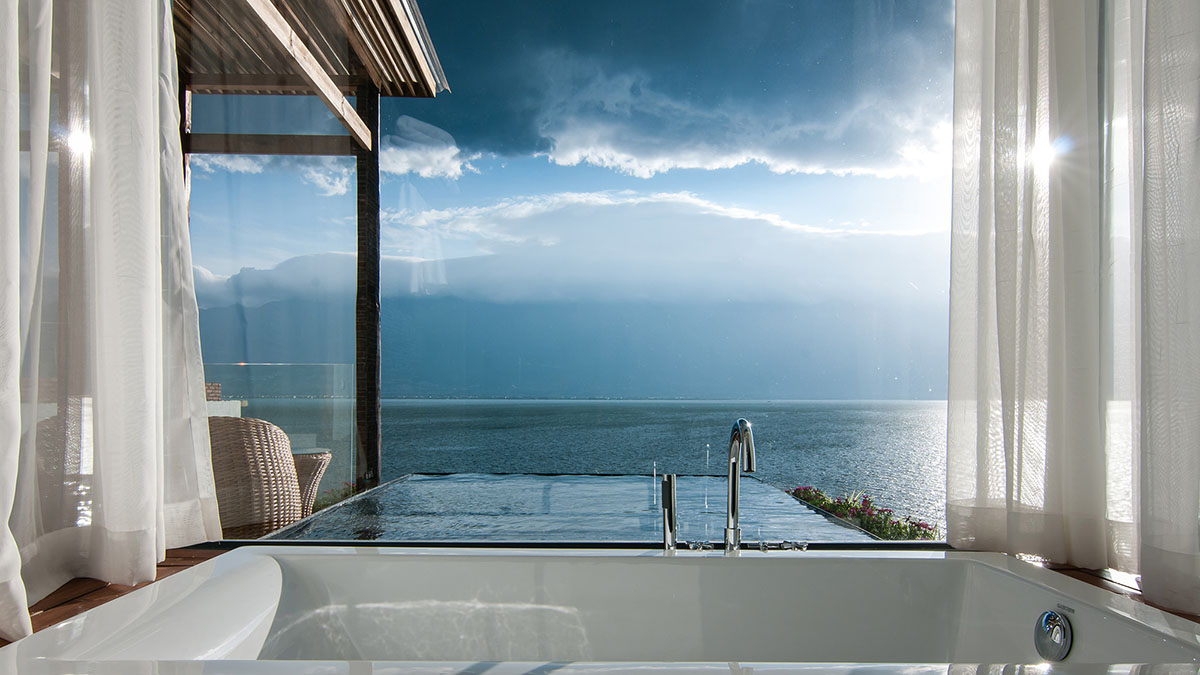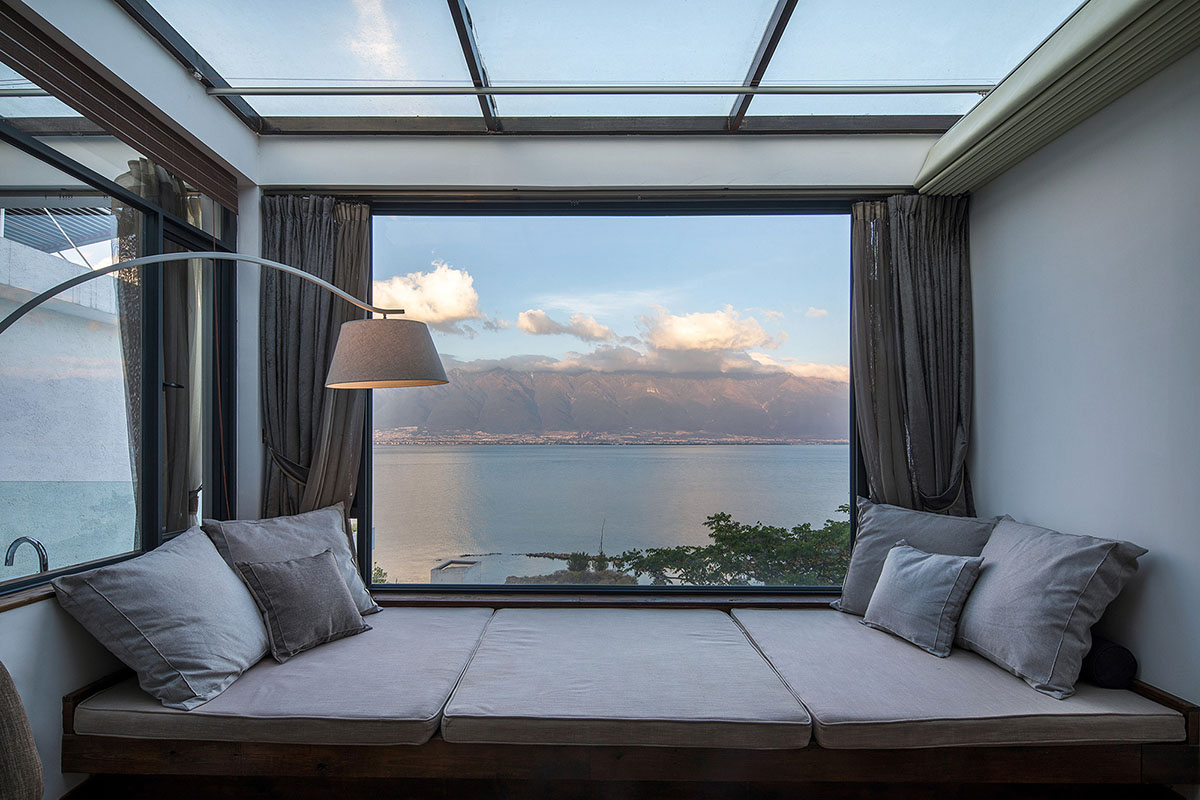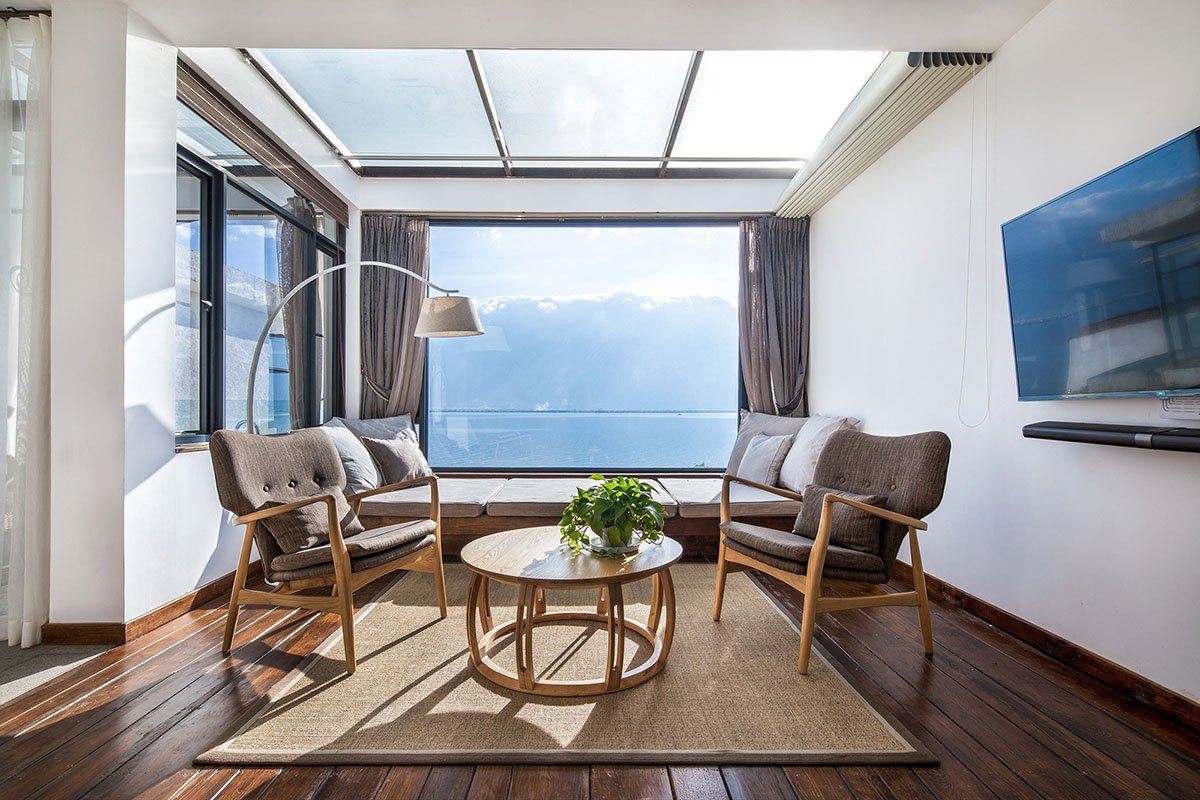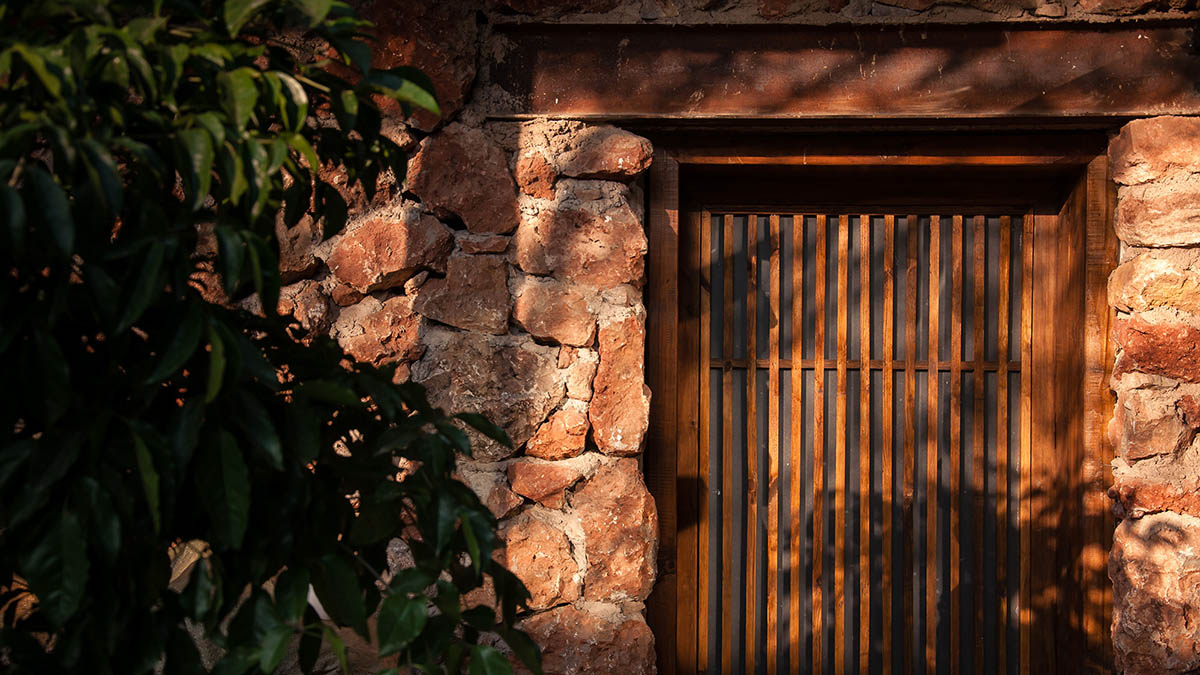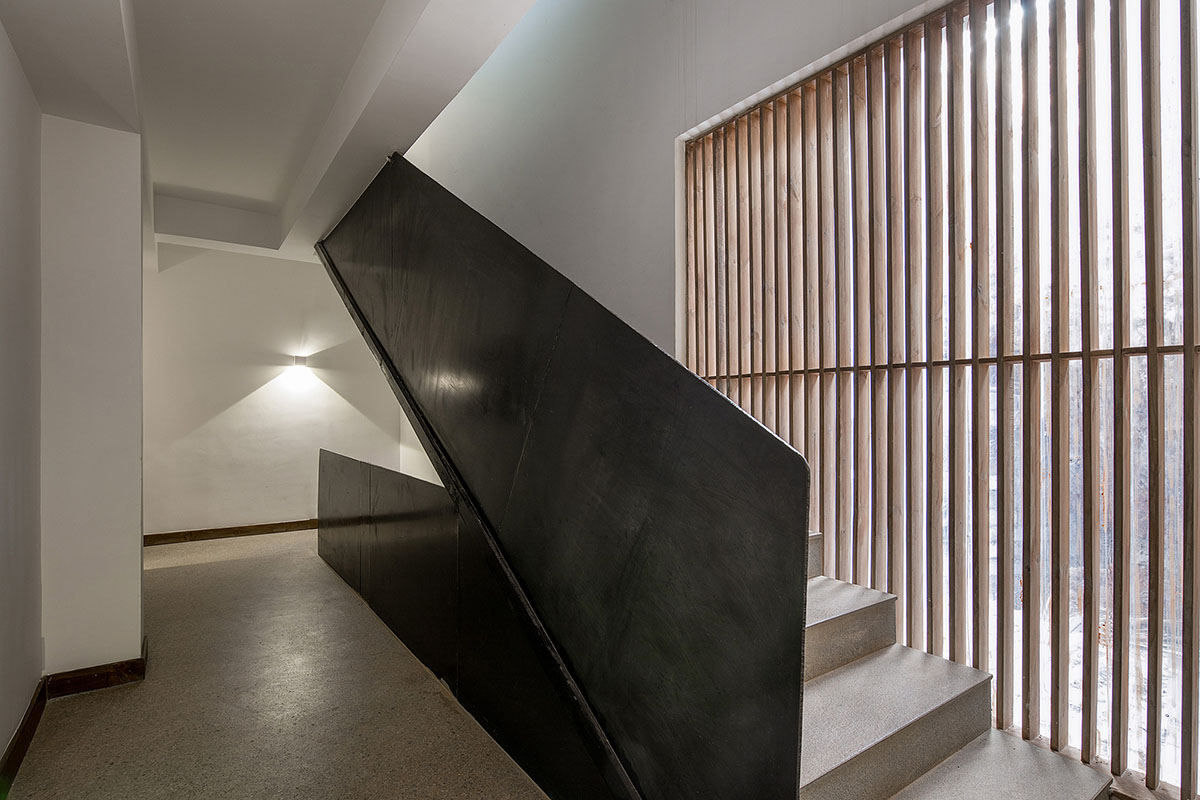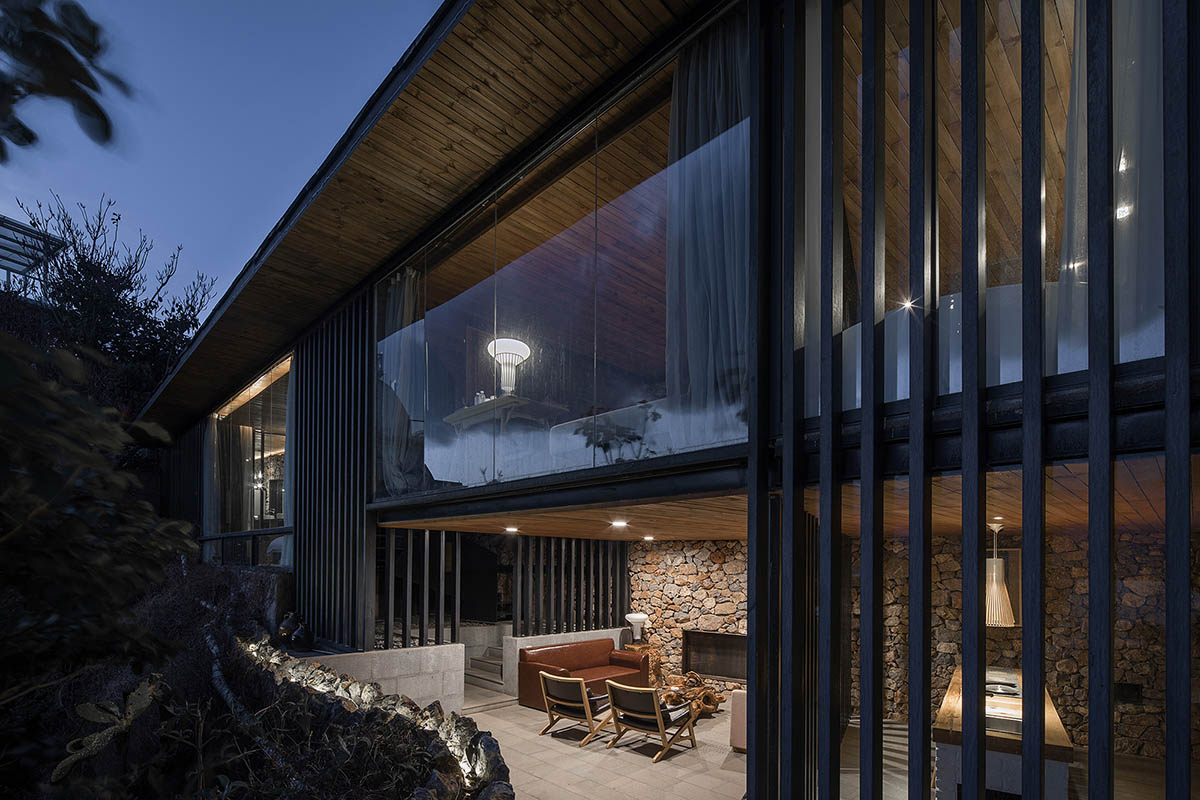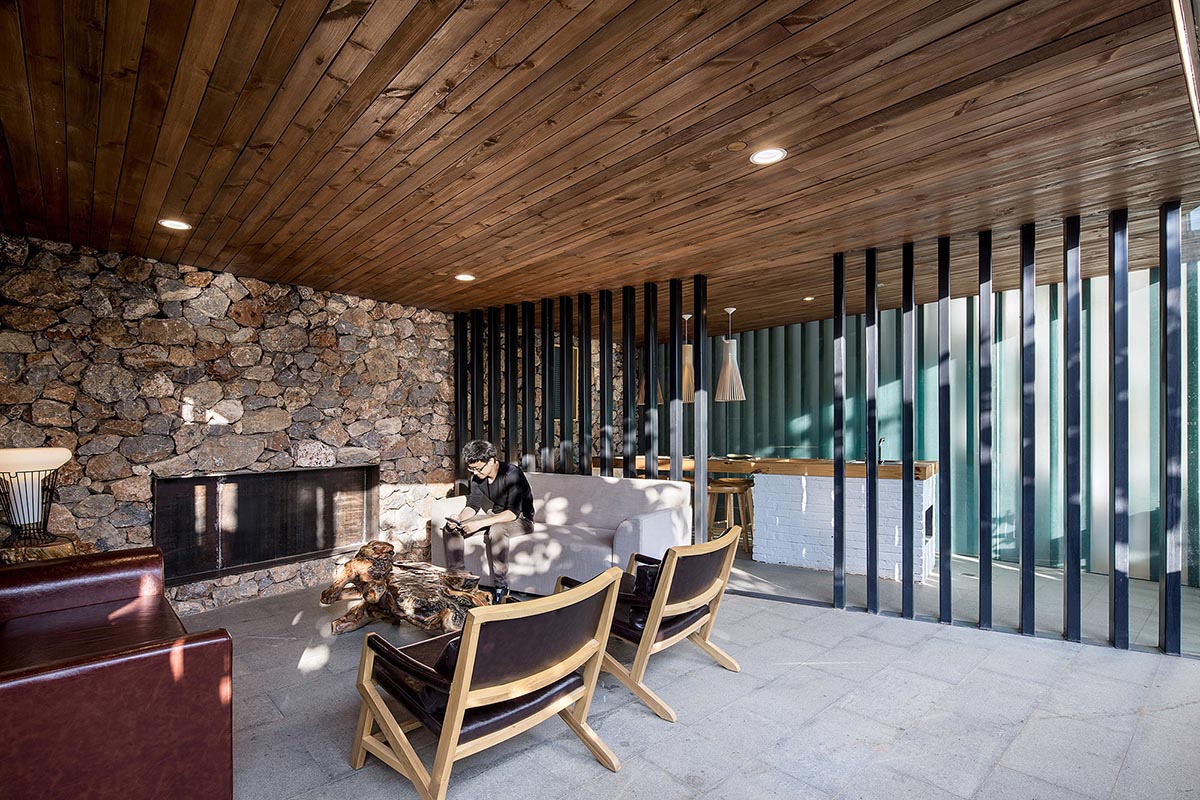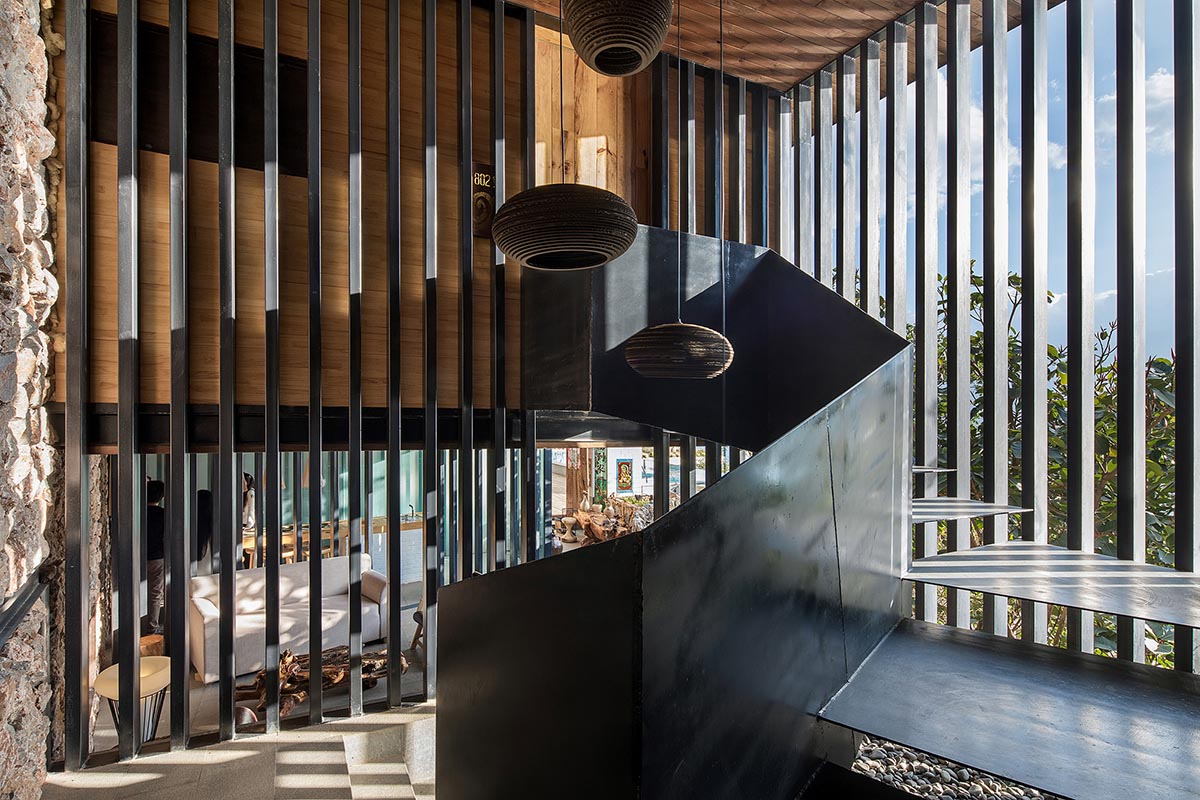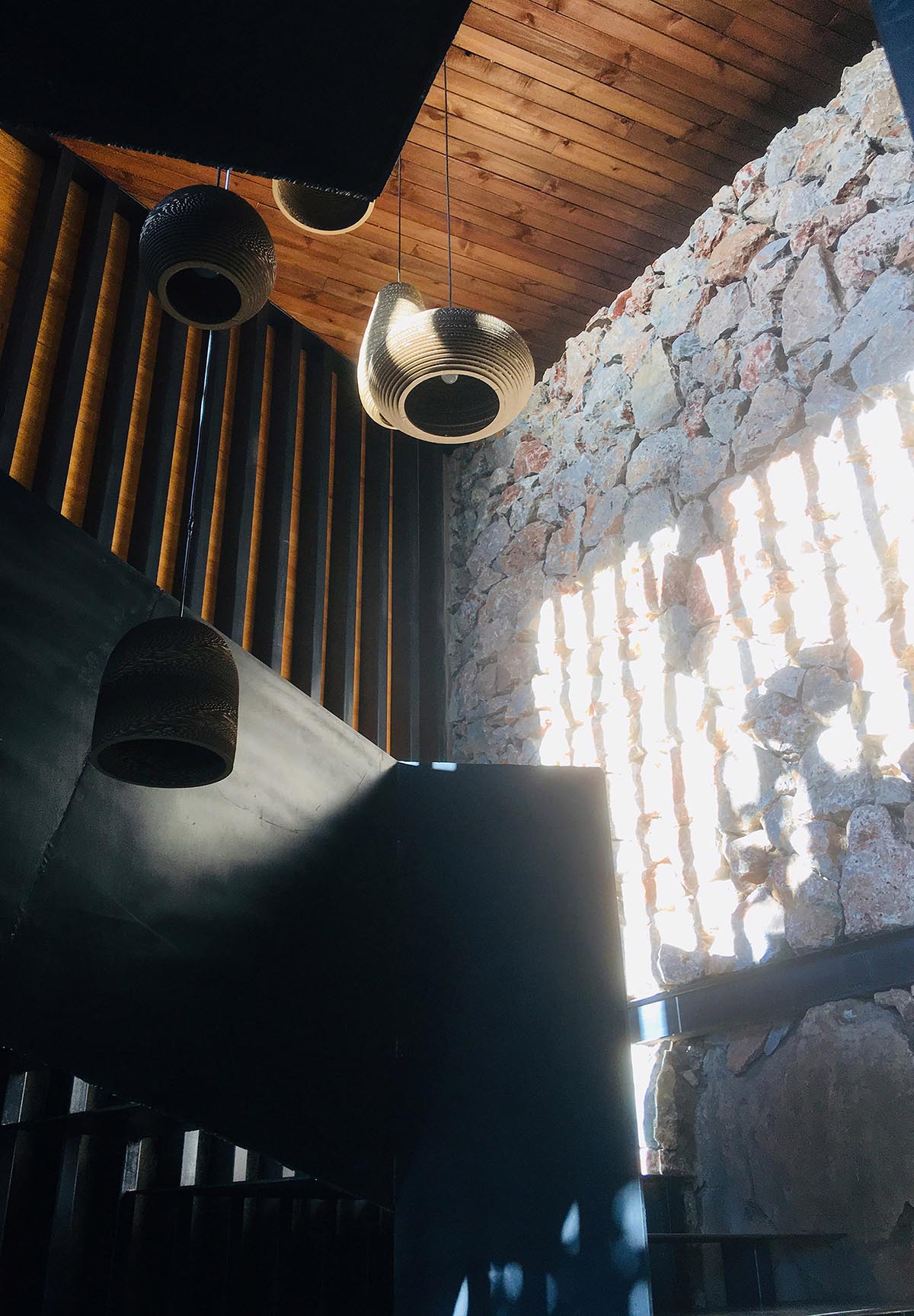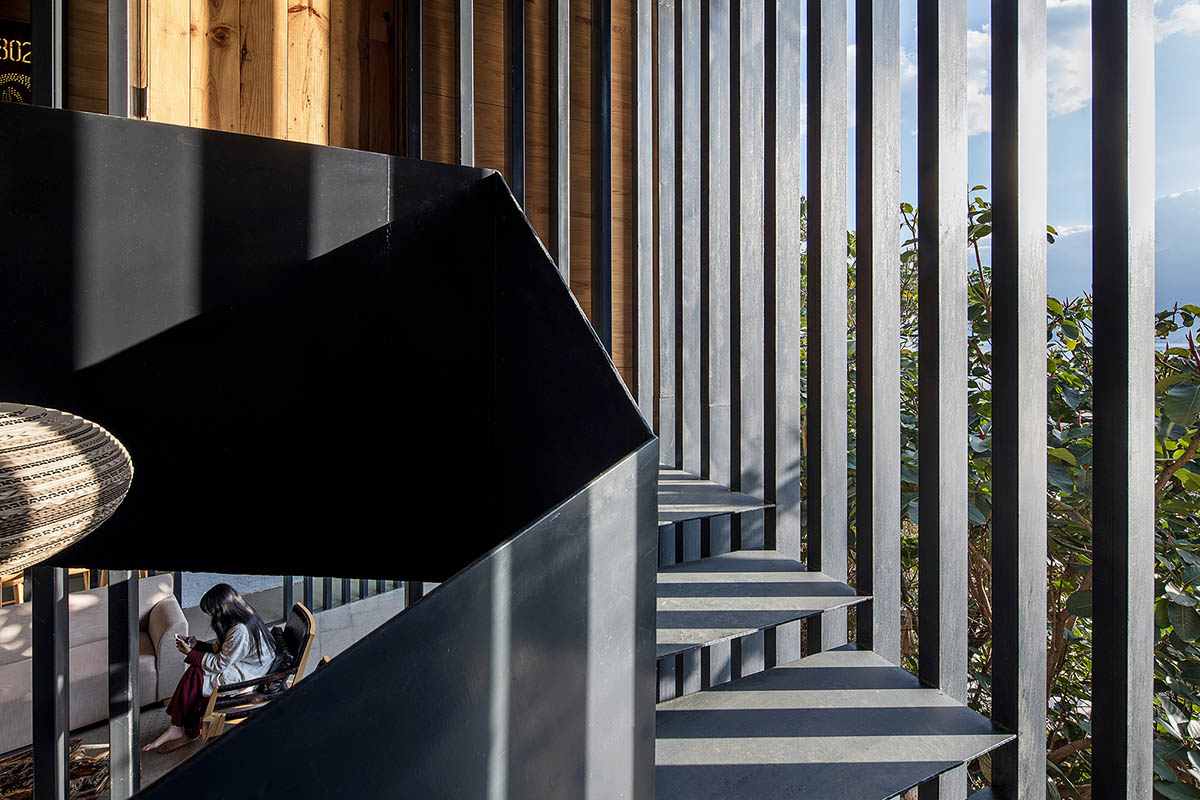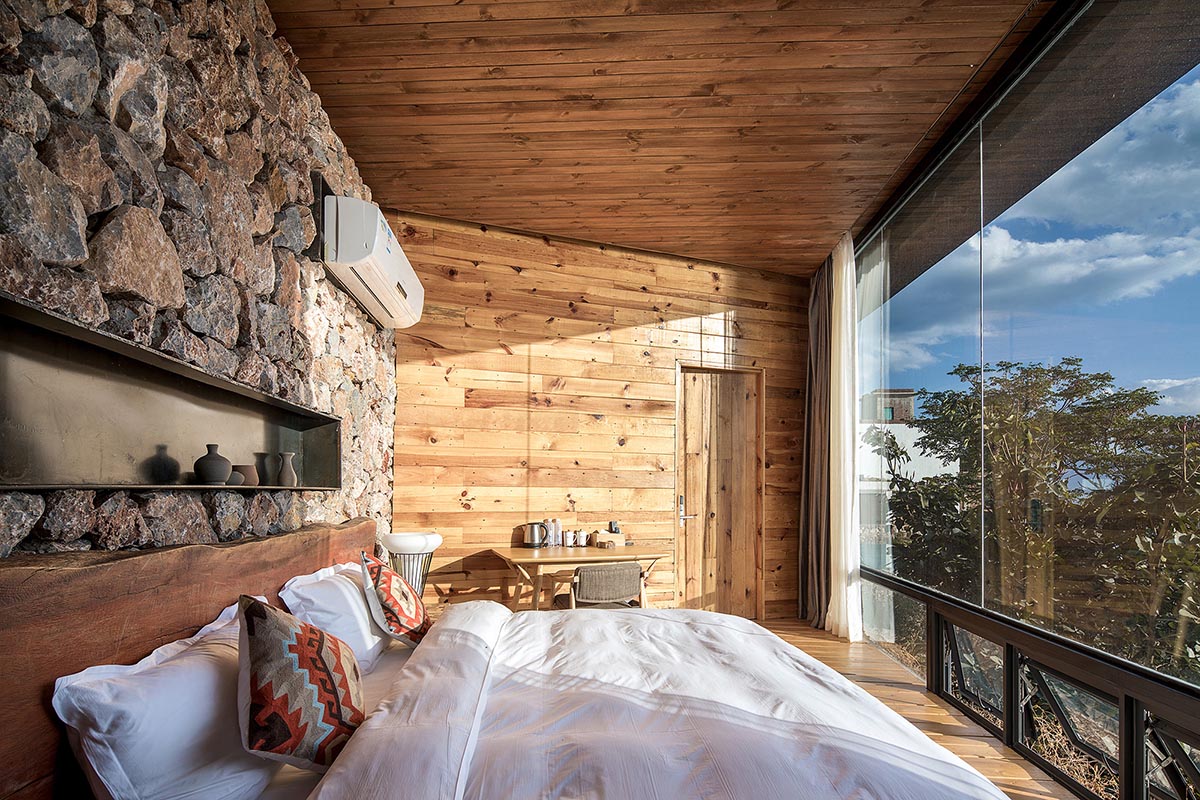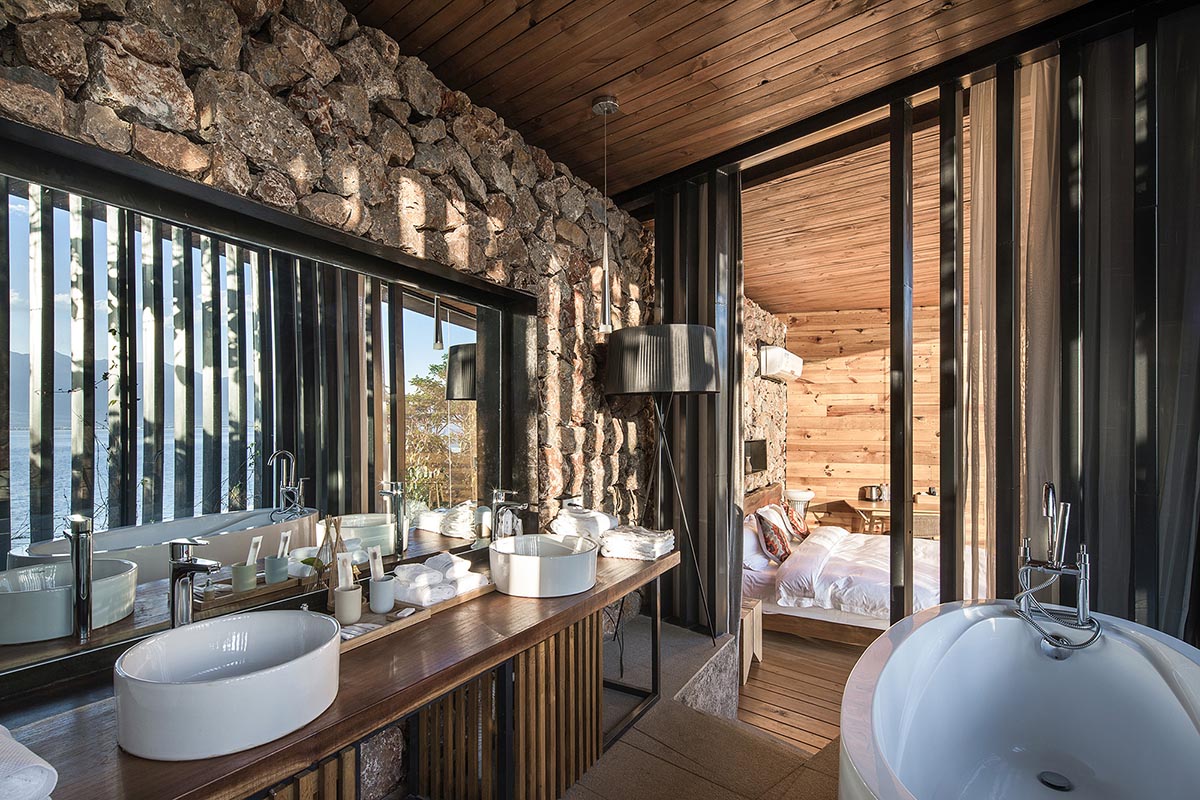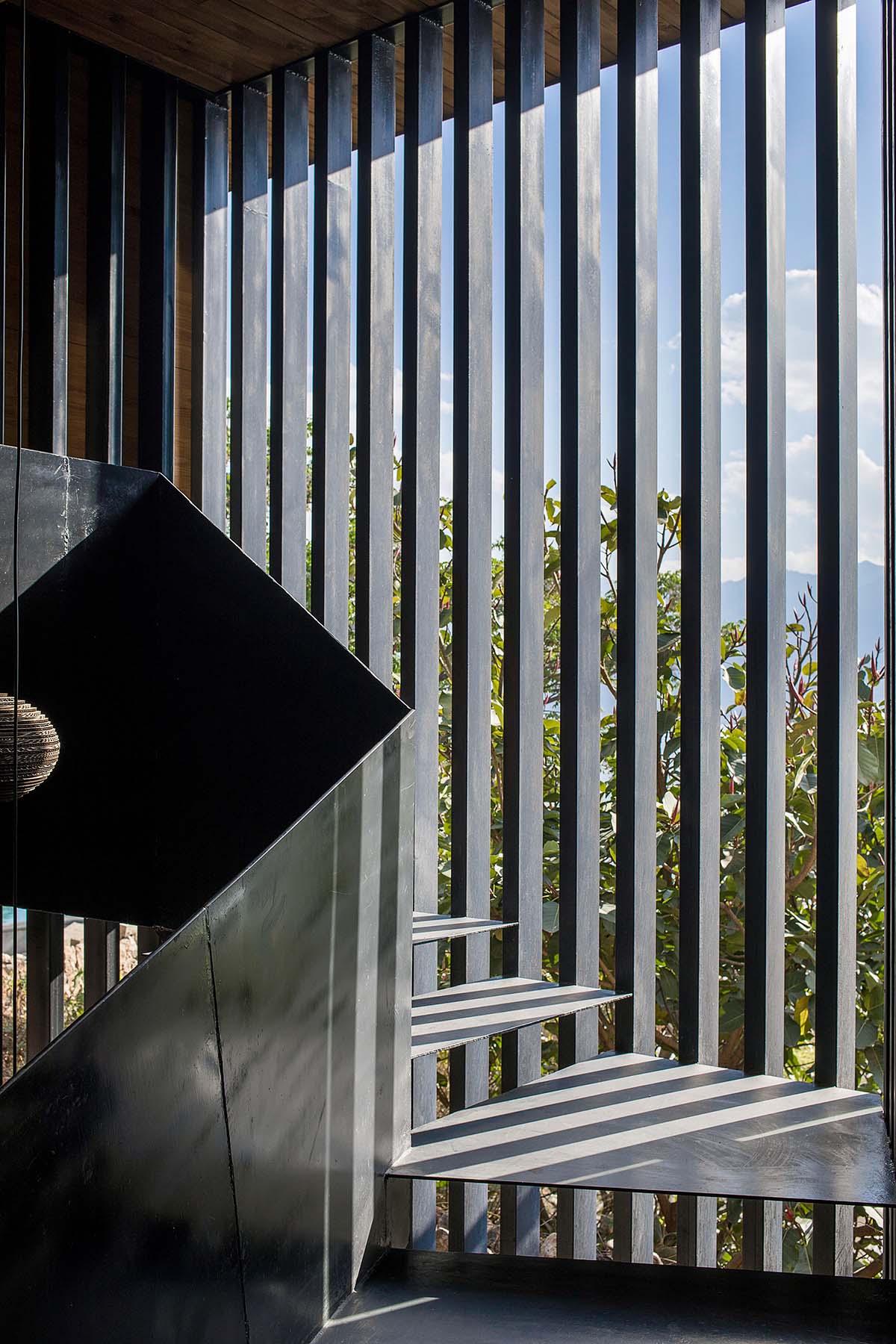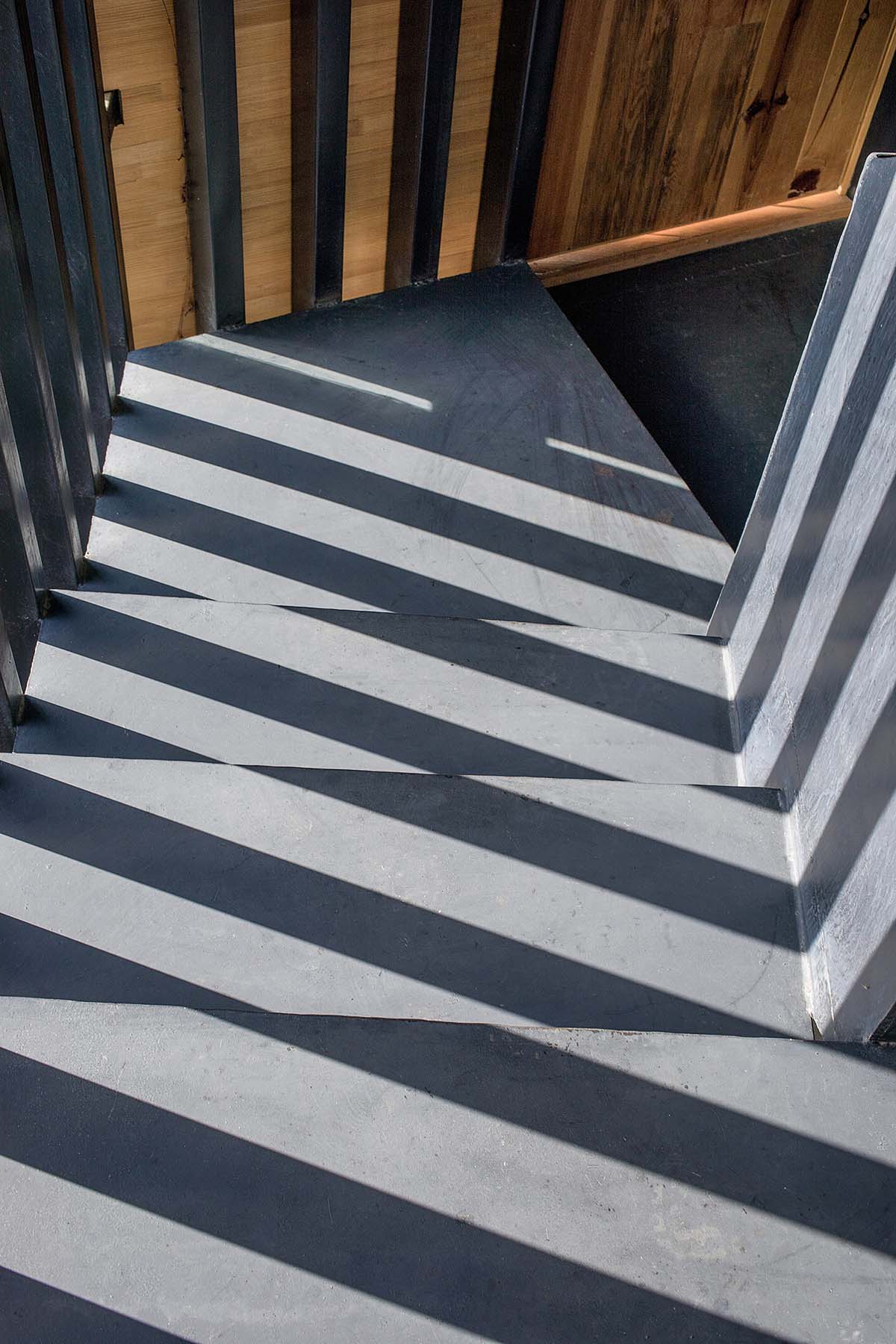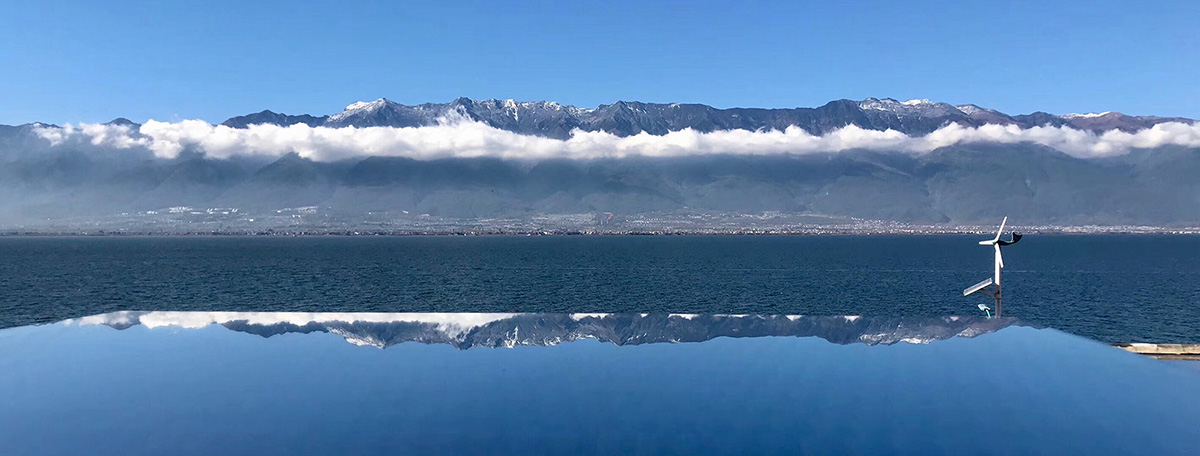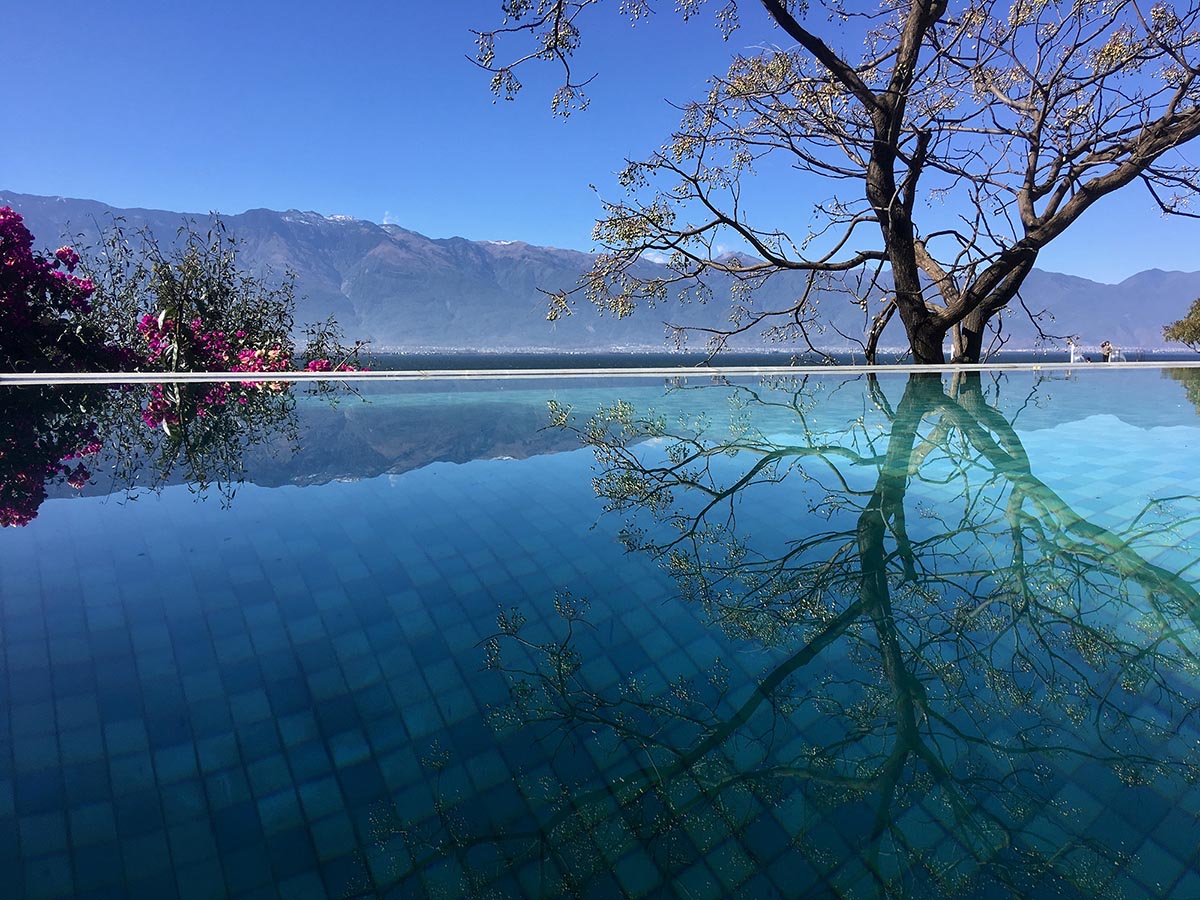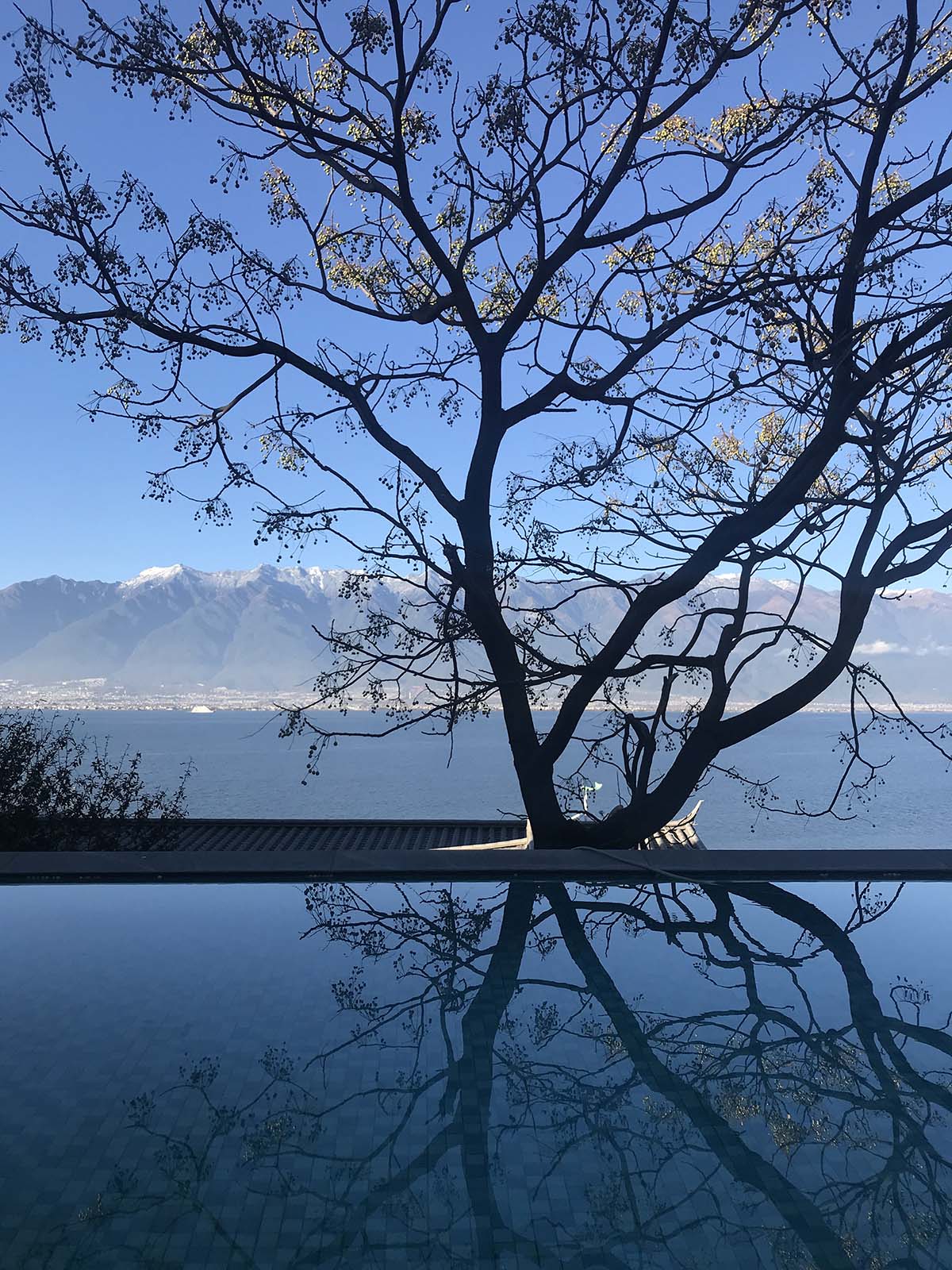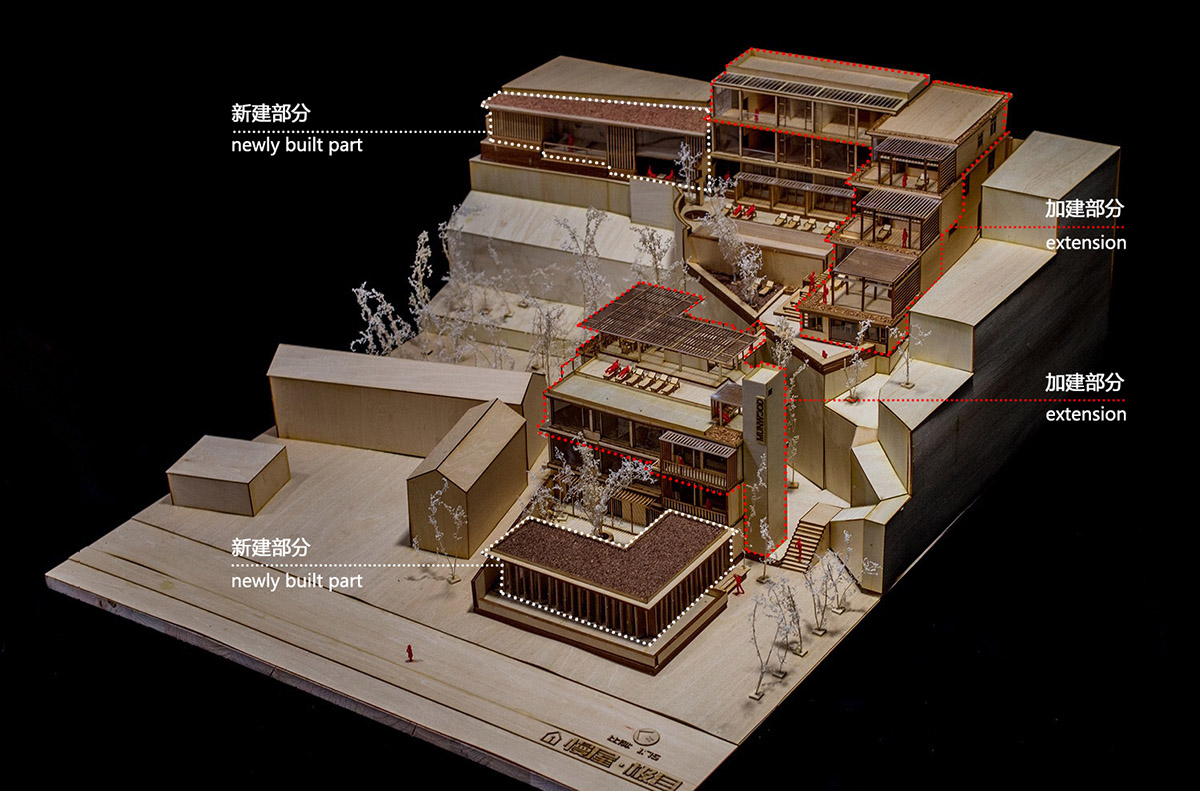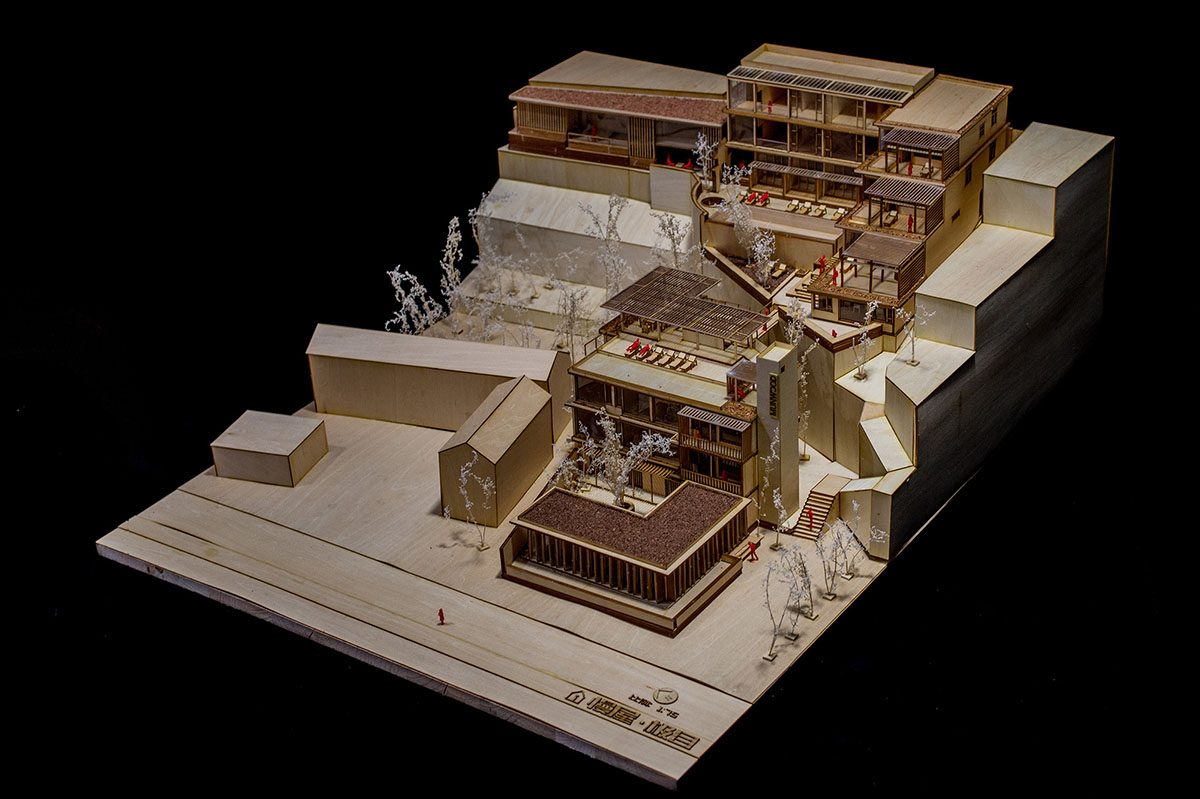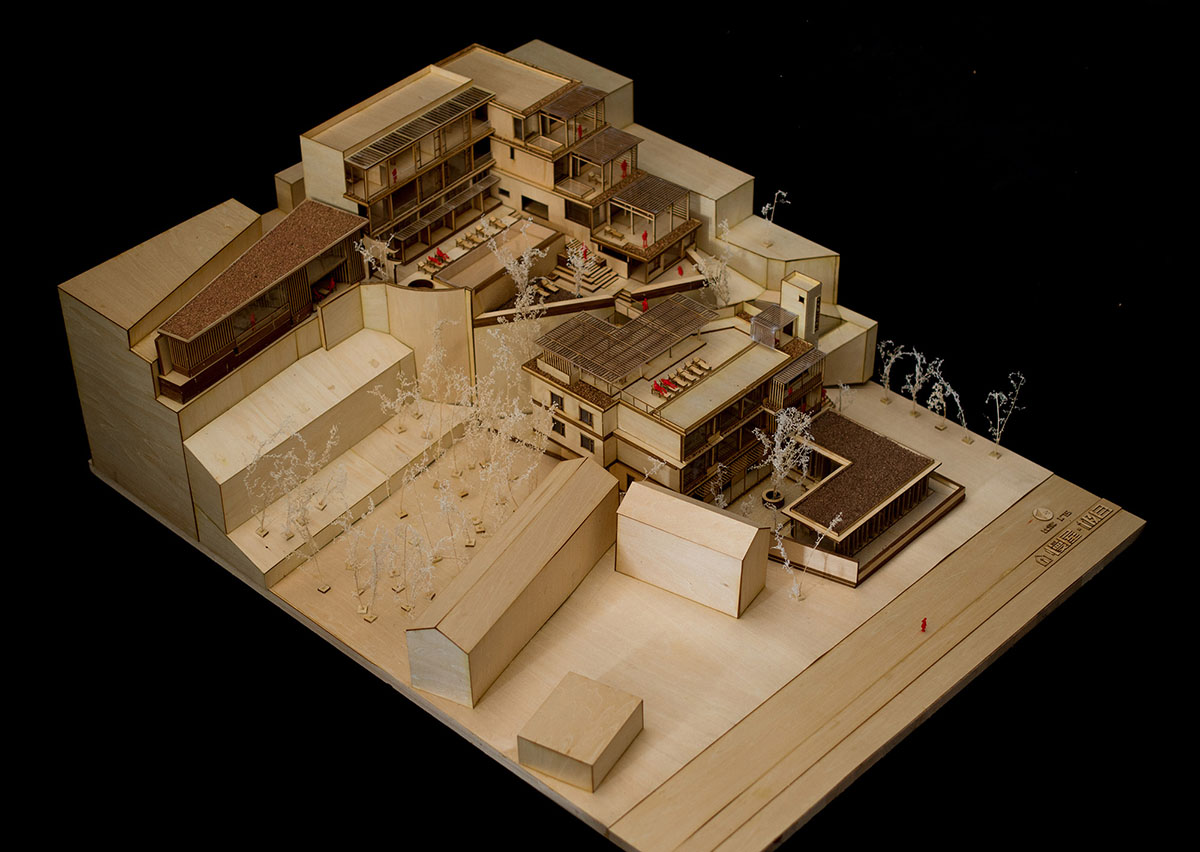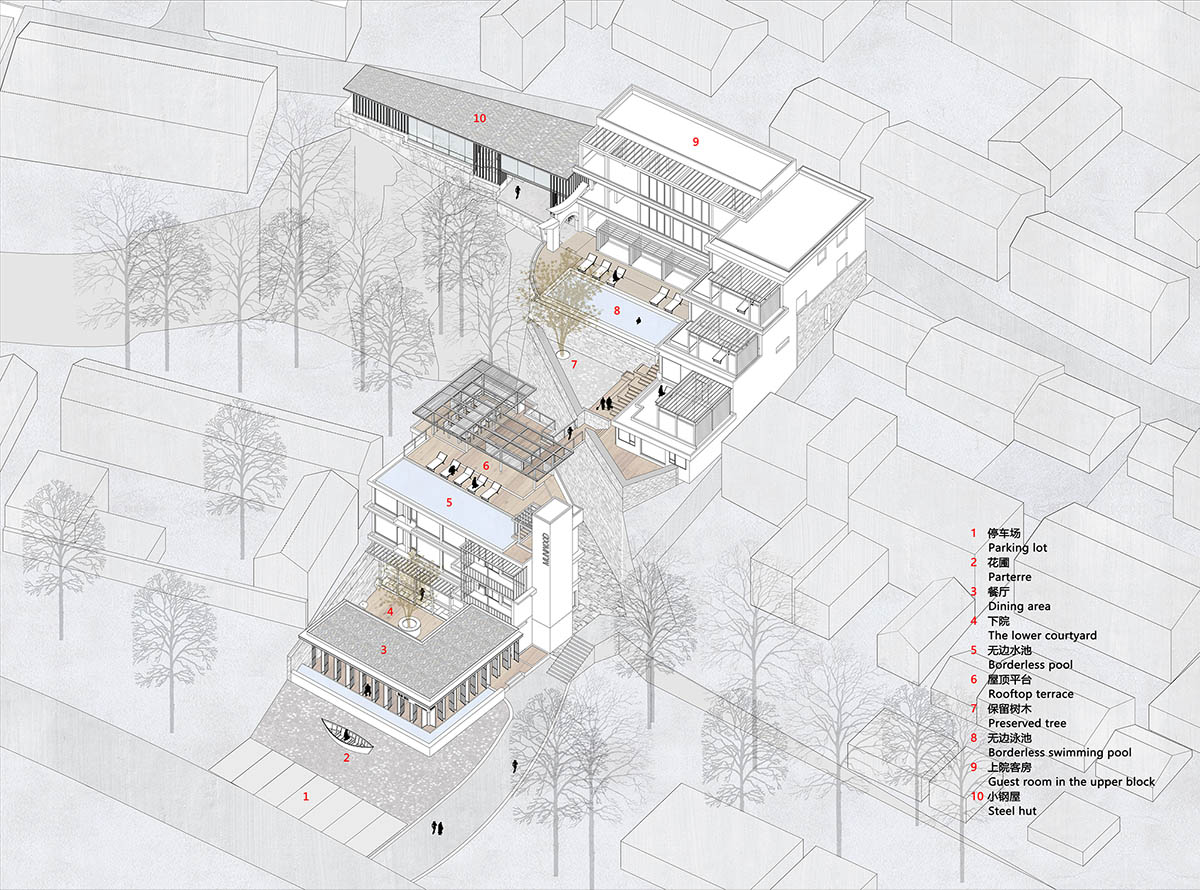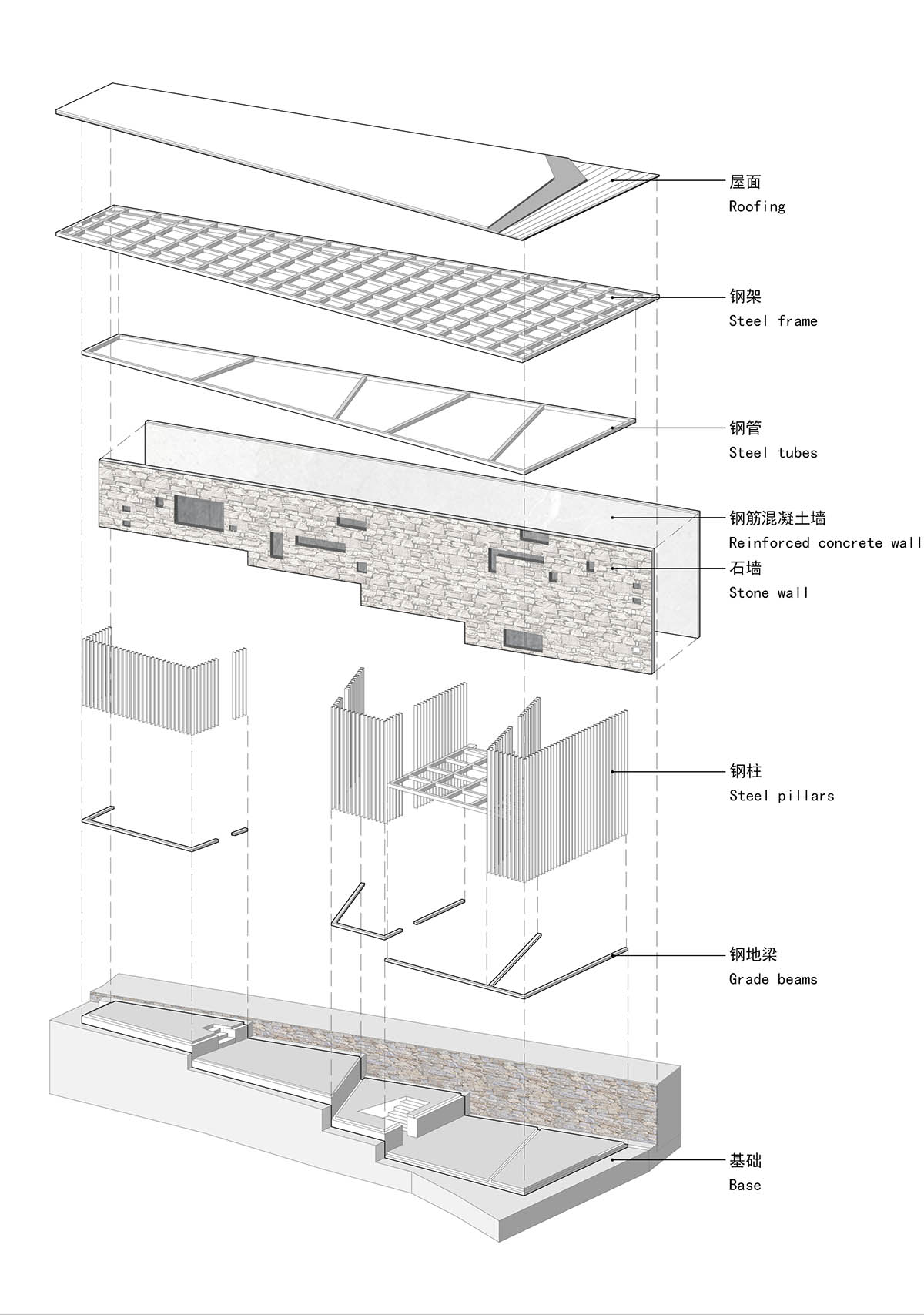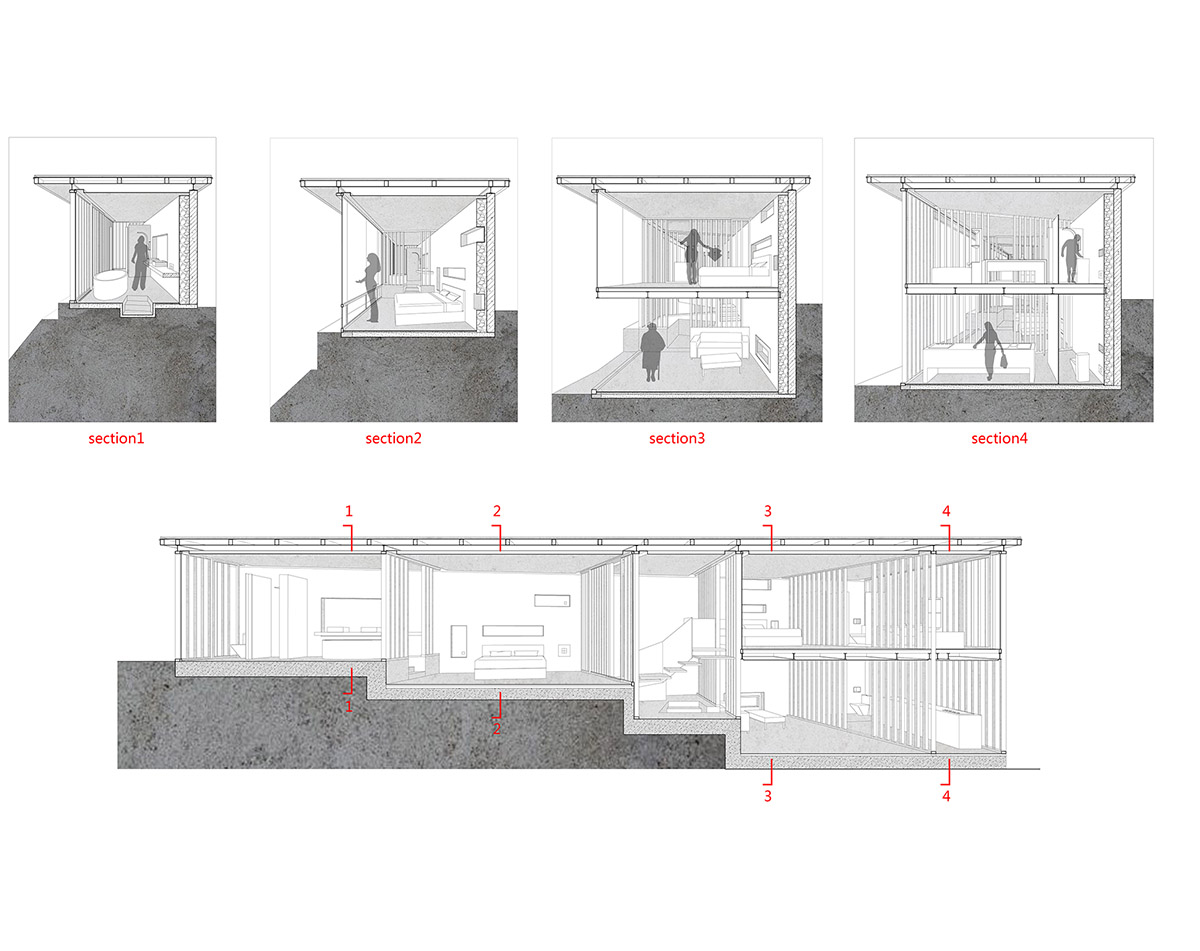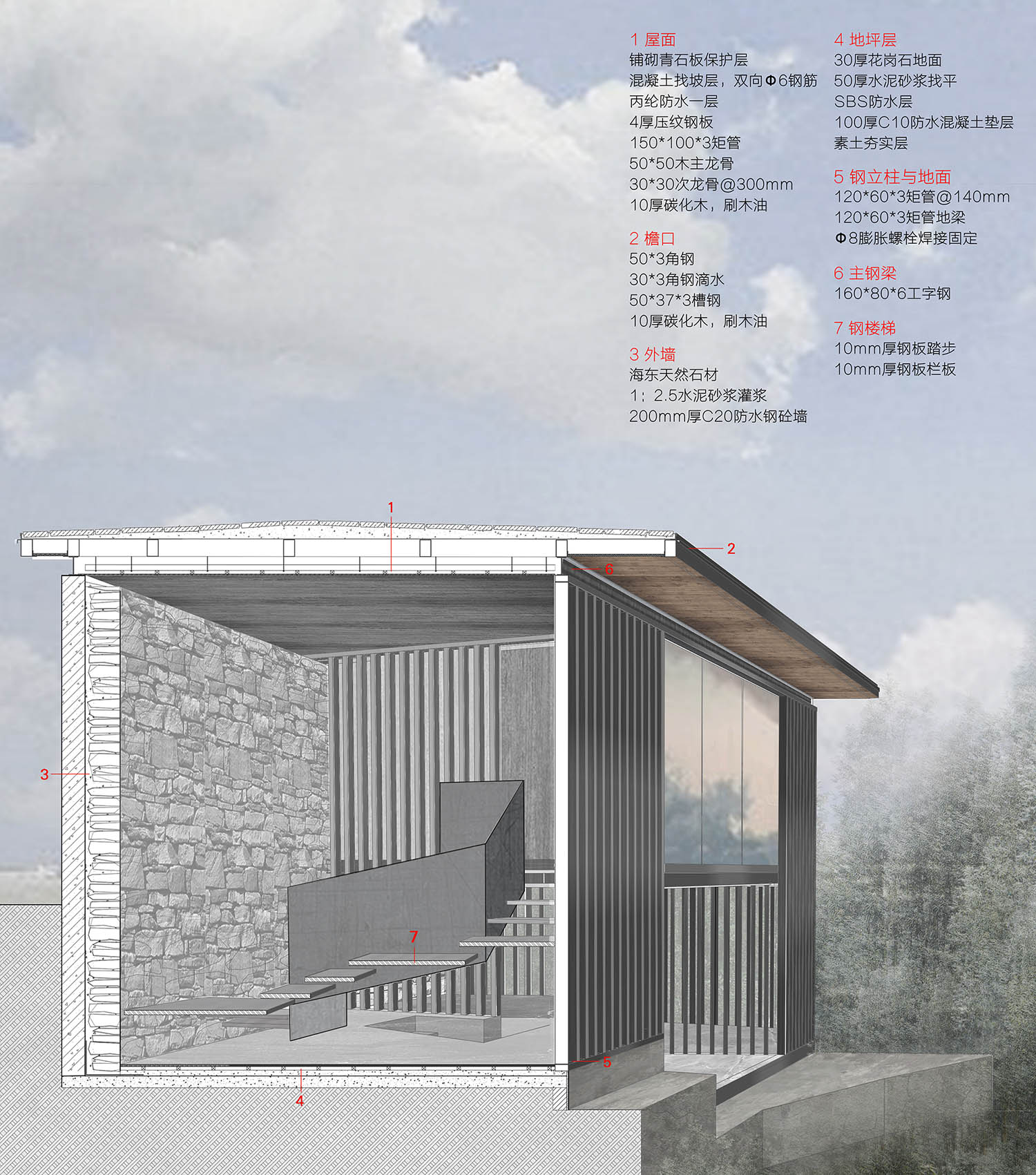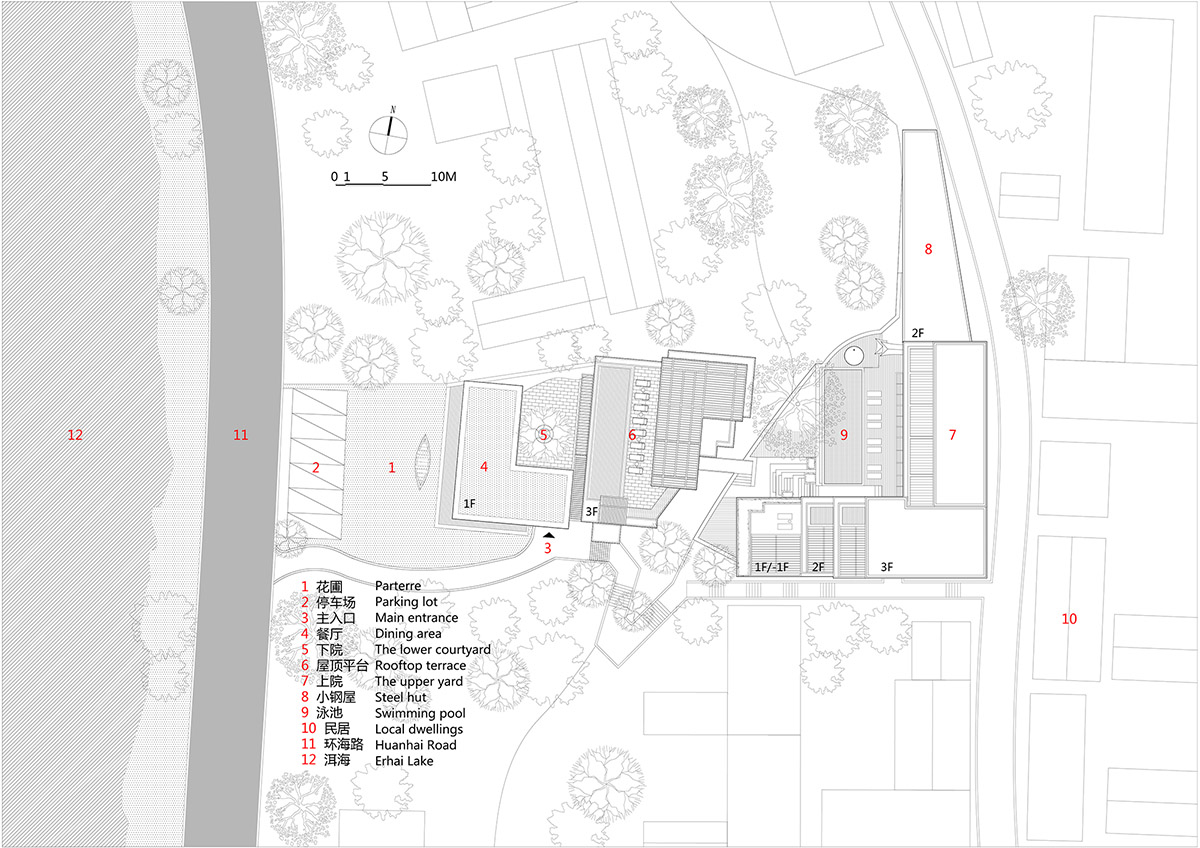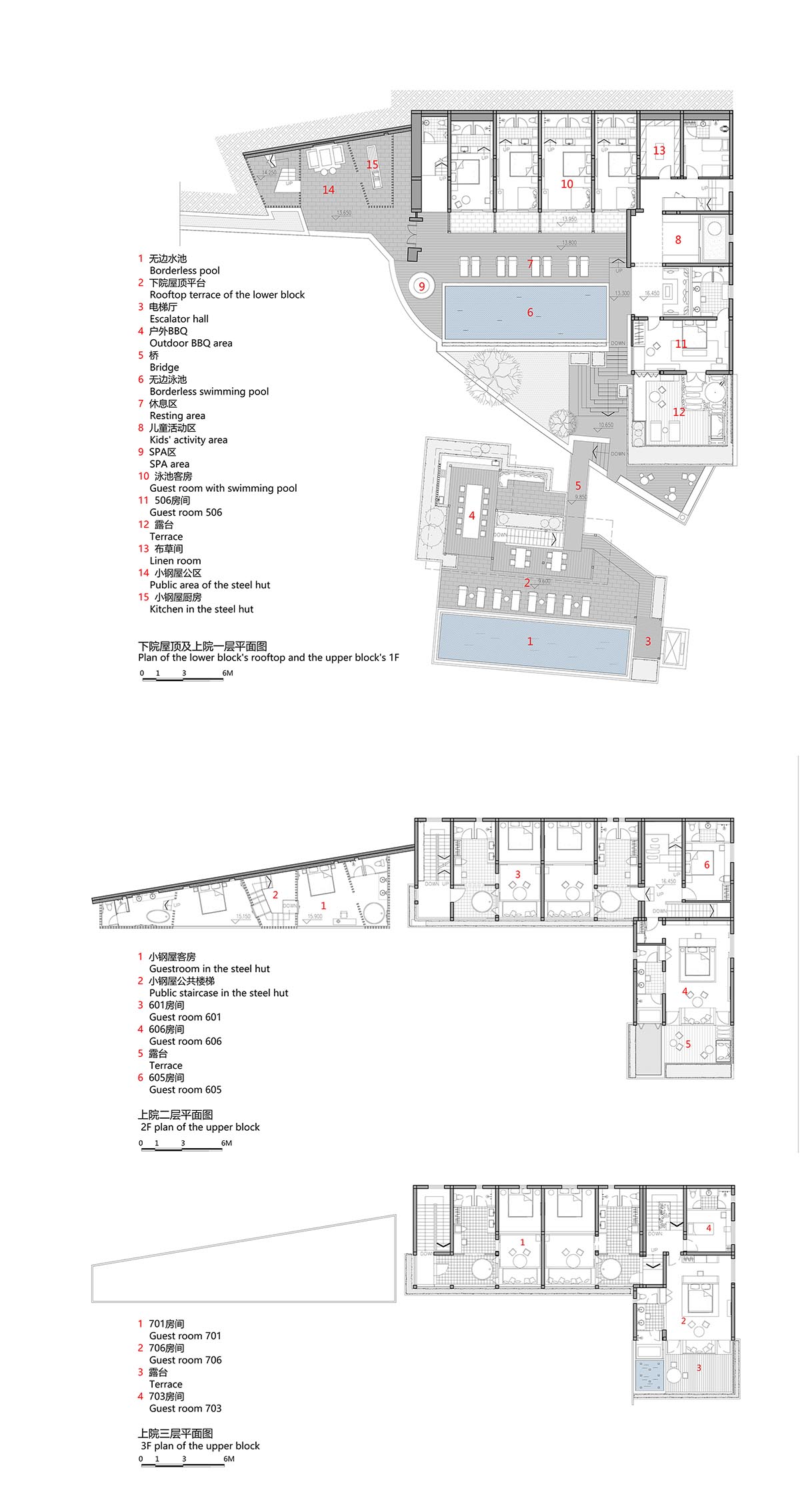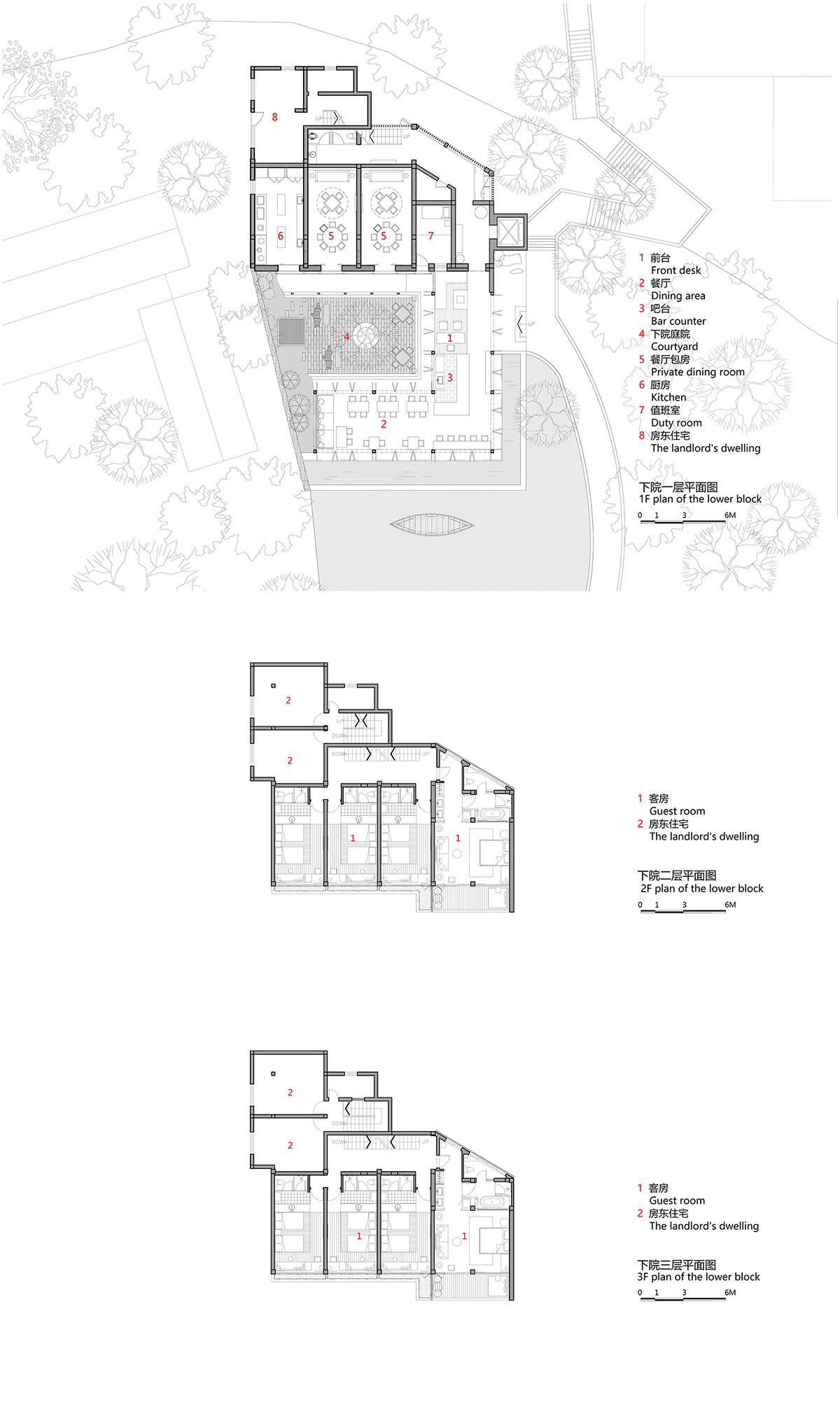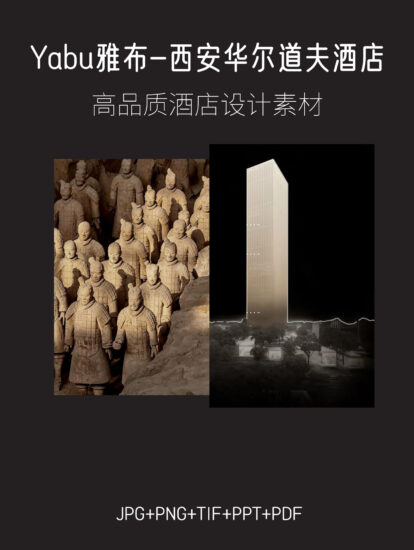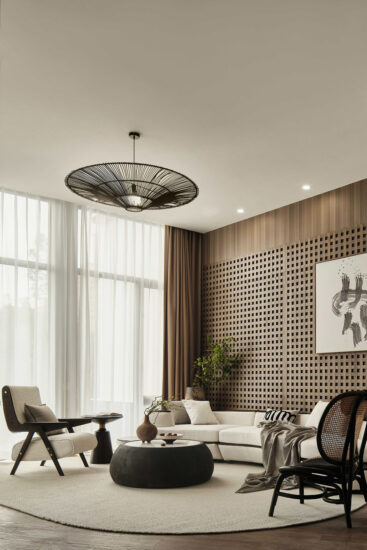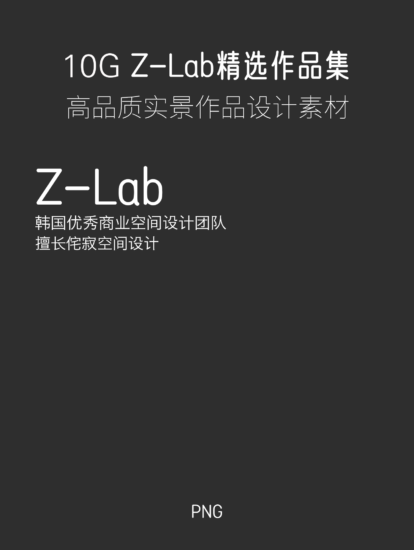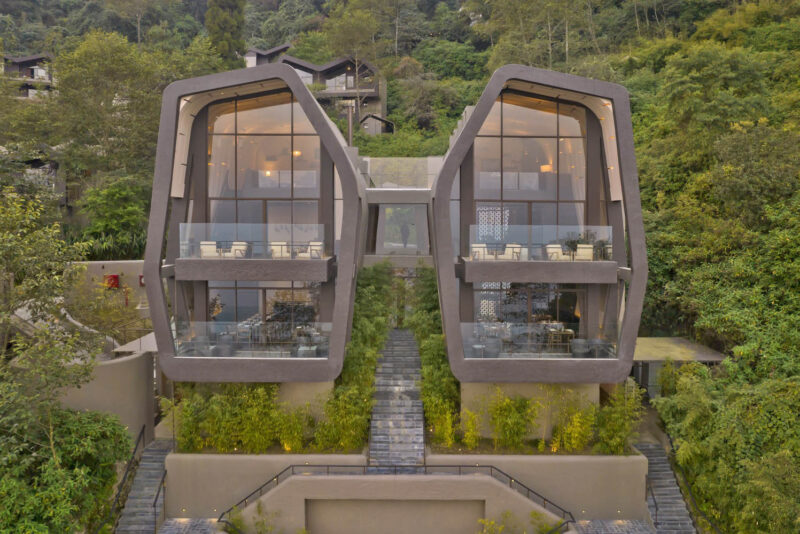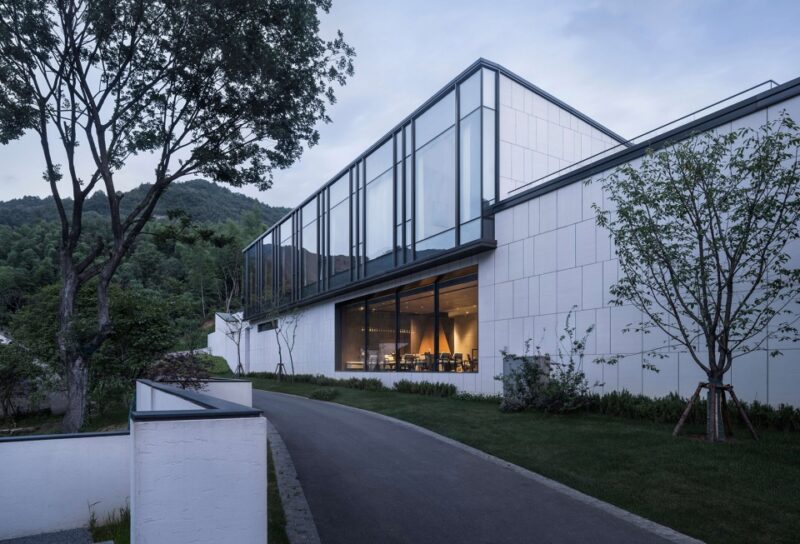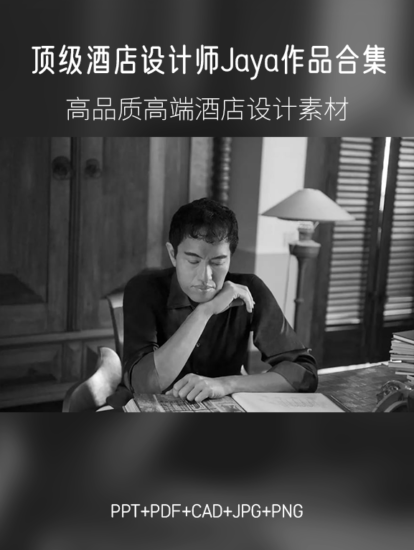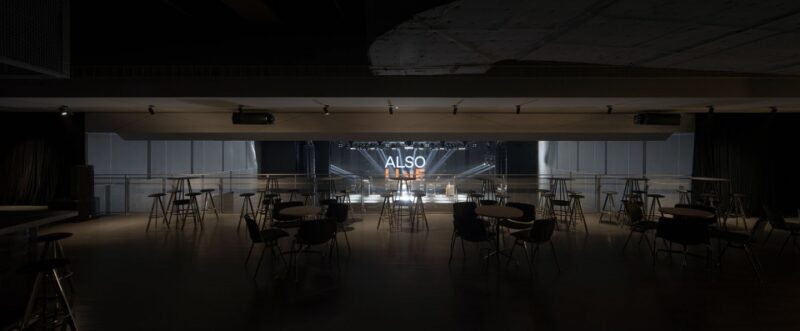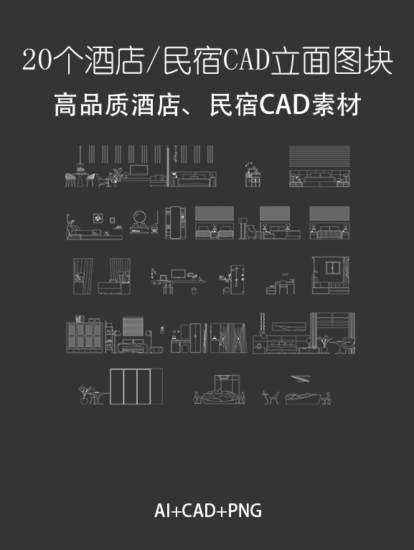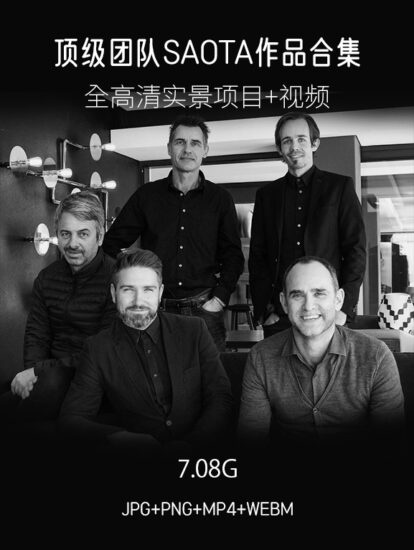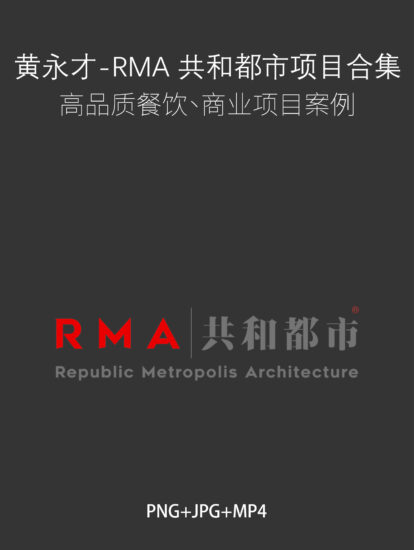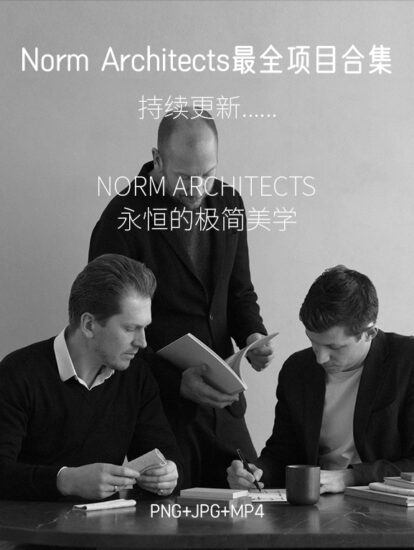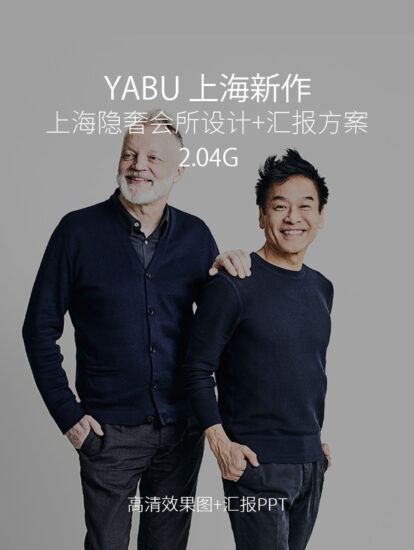LOFT中國感謝來自 IDO元象建築+重慶合信建築設計院 的住宅項目案例分享:
1.項目緣起
IDO元象建築與重慶合信建築設計院於2015年完成了第一個設計型酒店——大理“慢屋·攬清”(Munwood Lakeside),建築師所承擔的是兼具甲乙方的雙重角色,從最初的策劃、選址、設計、建造管理再到酒店運營,可謂是全過程的參與。同年,建築師開始了位於洱海東岸第二個慢屋——“慢屋·極目”(Munwood Panorama) 的設計,第一個慢屋所積累的客戶使用反饋作為真實存在的建築評價,成為了設計第二個慢屋時最為可靠的依據與動力。
1. Background
In 2015, IDO completed the first design hotel (called Munwood Lakeside) in Dali, China, in collaboration with Chongqing Hexin Architectural Design Institute. We played a dual role in that project since we were our own client. We participated in all stages of that project, from planning and site selection to design, construction and operation. In the same year, we started the design of Munwood Panoroma, which is the second hotel of Munwood series, located on the east bank of Erhai Lake. The feedbacks received from guests on Munwood Lakeside gave us references and impetus to approaching the design of this project.
∇ 蒼洱全景(元象建築)Panoramic view of Erhai Lake and Cang Mountain ©IDO
∇ 建築與村落(梁小龍)Architectures & village ©Liang Xiaolong
∇ 區位圖 Location analysis
2.選址與訴求
考慮到“慢屋·攬清”客人的體驗是“清晨,臥於床榻可觀洱海日出”,為了客人獲得不同的體驗,“慢屋·極目”的選址關鍵詞自然地選定為“日落”:選址位於海東鎮的文筆村,此處依山傍水,對岸正對著蒼山、古城與三塔,這裏是整個洱海環線上可以飽覽“蒼洱全景”的最佳位置,項目取名為“極目”,以場地視線極佳,適合“極目遠望”而得,英文名 “Panorama” 更暗合了“蒼洱全景”的畫麵感。
文筆村呈現出典型的坡地聚落的特征,慢屋最終選定的位於山腳下及半坡上不同標高兩戶人家的院子,占地約兩畝半,場地豎向垂直高差近四層。基於整個項目低造價的改造原則上,“輕介入”的改造方式自然成為了建築師的選擇,適度改造的方式使建築更和諧地融入於原村落環境之中。
2.Site selection & requests
Considering that Munwood Lakeside enables guests to enjoy sunrise on the bed, we hoped to create a different experience for them in Mundwood Panorama, and so took “sunset” as the key word for choosing the site. Finally we decided to locate the project in Wenbi Village of Haidong Town, which directly faces the Cang Mountain, Dali Ancient City and Three Pagodas of the Chongsheng Temple and is a perfect position to have a panoramic view of Erhai Lake. We named the hotel “Panorama”, indicating that it provides an open view to the surrounding landscape.
Wenbi Village features a cluster of architectures on a sloping land. We selected two local dwellings with yards for building the hotel. Covering a land area of 1,666 sqm in total, the original two architectures are respectively situated on the foot and middle of the slope, with a big elevation difference that is nearly the height of four storeys. Based on the principle of low-cost, we chose to work on the transformation via “subtle interventions”, so as to better let the architectures blend with the built environment of the village.
∇ 周邊環境(元象建築)Surroundings ©IDO
∇ 周邊環境(元象建築)Surroundings ©IDO
∇ 建築外觀(存在建築—建築攝影) Architectural appearance ©Arch-Exist Photography
∇ 下院餐廳(梁小龍)Dining area of the lower block ©Liang Xiaolong
∇ 下院餐廳及內院(梁小龍)Dining area & the inner yard of the lower block ©Liang Xiaolong
∇ 下院餐廳室內(存在建築—建築攝影) Dining interiors of the lower block ©Arch-Exist Photography
∇ 下院屋頂花園(存在建築—建築攝影) Roof terrace of the lower block ©Arch-Exist Photography
∇ 下院屋頂花園(存在建築—建築攝影) Roof terrace of the lower block ©Arch-Exist Photography
∇ 下院屋頂花園(存在建築—建築攝影) Roof terrace of the lower block ©Arch-Exist Photography
∇ 上院與泳池(存在建築—建築攝影) The upper block & swimming pool ©Arch-Exist Photography
3. 適度改造與秩序重塑
設計首先對上下院功能空間進行重新組織。下院的改造:在原有二層磚混結構農宅屋頂上加建第三層作為客房。同時在下院新建了一處呈L型的單層鋼結構建築與原有農宅圍合成院落空間,置入了餐廳、接待功能。上院的改造:原有農宅為二層半的磚混結構,設計上以原有結構形式完成第三層,同時在其一側加建三個帶大露台的退台式客房空間,使其形態由一字型成為L型,使得上院空間形成以無邊泳池為景觀核心的半圍合空間形態。在上院主體客房的北側為新建的獨立客房區,同樣采用的鋼結構的結構體係,簡稱“小鋼屋”。建築師在所有新建部分的建造方式上之所以選擇鋼結構,是希望更明確的表達新舊之間的空間關係以及建構層麵上的區別,使其更有類型學上的差異和可識別性。
3.Moderate transformation and reshaping of order
We firstly rearranged the functional spaces of the two original buildings — the upper block and lower block. The lower block is formerly a two-floor farmer’s house, constructed with bricks and concrete. We added a third floor to its roof to accommodate guest rooms. Besides, we also built a L-shaped steel-structured volume on the ground, which encloses a courtyard-like space with the building already existed and functions as the reception & dining area. The upper block is formerly a two-and-a-half-storey rectangular local dwelling, also built with bricks and concrete. We completed the third floor space by following the original architectural structure, and at the same time added three guest rooms with big terraces on one side. In this way, the architecture was given a new “L”-like shape, and a semi-enclosed yard was formed, with a borderless pool as the highlight. On the north side, we newly built an independent guest room area. It is made of a steel structure, so we call it “steel hut”. The reason that we chose to adopt a steel structure is that we hoped to express the spatial relationship between the old and new, present the differences at construction and typology level, and make it more identifiable.
∇ 下院屋頂花園(存在建築—建築攝影) Roof terrace of the lower block ©Arch-Exist Photography
∇ 下院屋頂花園(存在建築—建築攝影) Roof terrace of the lower block ©Arch-Exist Photography
∇ 下院屋頂花園(存在建築—建築攝影) Roof terrace of the lower block ©Arch-Exist Photography
4.與山水對話的公共空間體驗
極目的公共空間是連續的而且是位於不同標高之上的,建築師為客人提供了一條“移步異景”的“遊走路徑”,同時也建立了人與風景之間多維度的時空關係。下院的屋頂設置了公共休息平台,配置了無邊水池,休閑座椅區等,客人從接待大廳乘坐電梯到這裏之後,會先在這個平台上俯瞰洱海,遠眺蒼山,建構了與山水的第一次對話。下院屋頂平台經過一座鋼結構的橋跨越懸崖進入上院,拾級而上,行至上院無邊泳池回望:湖光山色,盡收眼底。加之不同季節、一天中不同時間段陽光、風等氣候要素的介入,客人將獲得多重的體驗,對“蒼洱全景”也將有不同的認知。
4.Public spaces: dialogue with nature
The public spaces are continuous and situated at different elevations, thereby forming a circulation route for guests along which they can enjoy varying views at every step, and also generating multi-dimensional interactions between people and landscape. We created a public terrace on the roof of the lower block, which is equipped with a borderless pool and a relaxing seating area. Taking the elevator upwards from the reception lobby, the guests will reach this rooftop terrace, on which they can overlook the Erhai Lake and Cang Mountain and establish a dialogue with the natural scenery. And then, they can arrive at the upper block area after passing through a steel bridge that stretches across a small cliff and ascending the stairs. The yard of the upper block also has a pool and allows the guests to enjoy the panorama of the charming lake and mountains. The sunlight and winds vary in different seasons and at different time throughout the day, which enriches the guests’ experience.
∇ 下院屋頂花園(存在建築—建築攝影) Roof terrace of the lower block ©Arch-Exist Photography
∇ 下院屋頂花園(存在建築—建築攝影) Roof terrace of the lower block ©Arch-Exist Photography
∇ 上院泳池房灰空間 框景(存在建築—建築攝影)Transitional space & framed view of pool-equipped guest room of the upper block ©Arch-Exist Photography
∇ 客房706 -1(存在建築—建築攝影) Guest room 706-1 ©Arch-Exist Photography
∇ 客房706 -2(存在建築—建築攝影) Guest room 706-2 ©Arch-Exist Photography
∇ 客房706 -3(存在建築—建築攝影) Guest room 706-3©Arch-Exist Photography
∇ 客房706-4 露台細部(存在建築—建築攝影) Guest room 706-4: terrace details ©Arch-Exist Photography
∇ 客房706-4 浴缸與洱海(存在建築—建築攝影) Guest room 706-4: bathtub & Erhai Lake ©Arch-Exist Photography
5. 客房空間:多樣性與體驗感
慢屋·極目布置了23個客房,一共11種房型,在客房室內空間設計上,與風景關聯性的思考延伸到每一種房型設計中:比如601係列房型:設計一反常規地將衛生間空間與臥室空間的麵積比設置為1:1,結合入戶花園設置了浴缸區,並將室內空間處理成室外化的效果,營造了獨特體驗感的洗浴空間體驗,而在另一側的臥室區,從位於榻榻米上的睡眠空間往洱海方向看,臥榻區恰到好處地將風景進行了“框景”的構圖限定。606係列房型:衛生間布置策略於臥室區的一側,浴缸區域靠近外窗一側布置,窗外設置無邊際鏡麵水池,人在浴缸中的視線,水池恰好與與洱海相連在一起的關係,形成了與洱海更為“親近”的體驗感。而五樓靠近無邊泳池的客房外,建築師為了保證房間的私密性,特意在客房外設置了過渡空間,有木格柵形成了“框”的形式,這一處有縱深感的畫框同樣將泳池、洱海與蒼山構成為一幅“山水畫”。
5.Guest rooms: diversified types and experiences
Panorama Resort has in total 23 guest rooms of 11 different room types. The idea of connecting to nature was incorporated into the interior design of every room type. Taking the guest room 601 as an example, the design took an unconventional path by dividing space area equally between the bedroom and bathroom. The bathroom area is combined with an indoor garden, creating an illusion of being outside and providing a unique bathing experience. On the other hand, the bedroom area faces the Erhai Lake, and the window near the tatami frames the outdoor landscape. Another example is the guest room 606. Its bathroom is placed beside the bedroom area, with the bathtub situated next to the exterior window facing a reflective pool. Seen from the bathtub, the pool seems to connect with the Erhai Lake, forming a “closer” interaction between the lake and the guests. For the guest room on the 5th floor next to the borderless pool, a transitional space was specially set up in consideration of privacy. The wooden gratings in this area forms a “frame” with a sense of depth, which combines the pool, the Erhai Lake and the Cang Mountain in the background into a “landscape painting”.
∇ 客房706-5 浴缸與洱海(梁小龍)Guest room 706-5: bath tub & Erhai Lake ©Liang Xiaolong
∇ 客房601或701 窗與框景(存在建築—建築攝影) Window & framed view of guest room 601/guest room701 ©Arch-Exist Photography
∇ 客房601或701-1(存在建築—建築攝影) Guest room 601/guest room701-1 ©Arch-Exist Photography
∇ 材料 (梁小龍)Details of materials ©Liang Xiaolong
∇ 材料 (梁小龍)Details of materials ©Liang Xiaolong
∇ 下院過道與樓梯(存在建築—建築攝影) Passage & staircase of the lower block ©Arch-Exist Photography
∇ 小鋼屋外觀(存在建築—建築攝影) Appearance of the steel hut ©Arch-Exist Photography
∇ 小鋼屋公共客廳(存在建築—建築攝影) Public area of the steel hut ©Arch-Exist Photography
∇ 小鋼屋公共樓梯(存在建築—建築攝影) Public staircase of the steel hut ©Arch-Exist Photography
6. 關於體驗的建造:小鋼屋設計解讀
場地限製與空間邏輯
“小鋼屋”是位於上院場地的最北側,其用地狹長,呈梯形:長度約21米,南側最寬處約6米,北側最窄不足3米,場地北高南低呈緩坡形態,高差約2.5米,場地西麵臨懸崖,視線無遮擋,可直接觀“蒼洱全景”,場地東麵為堡坎,2米左右的堡坎上則為村子裏的公共通道。用地原是上院農戶進出村子的主要通道,由於上下院合並使用後,該用地將不再作為通道功能使用,慢屋希望在這塊狹小用地上形成一個帶有公共空間及兩間客房的獨立客房區,於是有了這次建築實驗:探索在較小麵積用地上實現高效、舒適、體驗感特別的度假空間。
針對用地麵積較小且不規則的現實條件,建築師決定將兩個客房空間的牆麵處理成斜線,呈“八字型”,以使客房空間麵對洱海獲得更為寬闊的景觀麵,而被這兩個客房空間“切割”剩下的三個“倒梯形”空間則成為了衛生間、廚房及公共樓梯等。這個劃分方式再結合對緩坡地形的分台及錯層處理,產生了路易·康(Louis I.Kahn)所說的“服伺與被服伺空間體係”:作為“服伺空間”的交通體、廚房、衛生間等;作為“被服伺空間”的客房、公共客廳等。
6.Experience-focused construction: an interpretation of the steel hut
Site restrictions and spatial logic
The steel hut is located on the northernmost side of the upper block. The site is narrow, long, and trapezoidal, which is about 21 meters in length. From south to north, the width gradually decreases from 6 meters to less than 3 meters. Besides, the site slopes downward from north to south, with an elevation difference of 2.5 meters approximately. Facing the cliff on the west, it provides the guests an open view to the Erhai Lake and Cang Mountain at a distance. In addition, on the east side of the site, there is a retaining wall about 2 meters high, above which is a public path of the village. The site of the steel hut was once the main passage for the dwellers of the upper block to enter and exit the village, but it no longer serves that function since the merging of the upper and lower blocks. We hoped to make use of it to build an independent guest room area with a communal space and two guest rooms, and so we carried out a construction experiment and exploration on creating an efficient, comfortable and experience-focused vacation space on a limited site area.
In view of the limited area and irregular shape of the site, we decided to arrange the flank walls of both guest rooms on diagonal lines, which splay outwards. In this way, the guest rooms have a wider view towards the Erhai Lake, and several ‘inverted trapezoidal” spaces were “cut” and left on the site, which were converted into a washroom, kitchen and public staircase hall. Such way of spatial division, combined with the split-level design based on the gentle slope, embody Louis I. Kahn’s concept of “Served Spaces and Servant Spaces”: with staircase hall, kitchen and washroom as “servant spaces”, and guest rooms and the public living room as “served spaces”.
結構體係與空間體驗
在空間秩序確定之後,建築師希望結構秩序與空間秩序是一體的,三個“服伺空間”成為了結構支撐筒,考慮到結構體係經濟性以及施工便捷度,結構設計采用了由小尺寸矩形鋼管排列形成的“鋼格柵筒體”作為主體支撐結構,由於矩形鋼管格柵之間留有較大的縫隙,光可以投射進來,所以該結構形式上與傳統的“筒體”不一樣,而更像是“光篩”,客人在鋼結構的“光篩”裏行進的時候,能夠感受到與自然的互動,特別是傍晚時分,西曬陽光透過鋼格柵縫隙將石砌牆麵照亮的時候,建築師將光影作為建築材料的一種特殊形式運用於建築空間中——“小鋼屋”本質上是一次以體驗自然為出發點的建造實驗。
由於場地東麵是堡坎以及高於場地的村路,因此建築師先是澆築了一道鋼筋混凝土牆,然後在朝向室內一麵用海東石砌築牆麵,形成了具有度假氛圍的背景牆,所有的開關插座、壁爐、空調位及物品櫃等均以壁龕的形式嵌入在石頭牆內,保證了石砌牆麵的完整性。石頭牆的粗糙、木質界麵的溫暖以及鋼的精致,幾種不同質感的材料在陽光下,共同形成了特別的空間氛圍。“小鋼屋”的設計反應了結構與空間之間理性的關係,在材料和建造方麵,建築師表達了清晰的建造邏輯和樸素的在地建造觀念。
Structural system and spatial experience
After figuring out the spatial order, we wanted to make the structural order integrate with it, and let the three “servant spaces” together constitute the structural supporting system. Considering the economy of the structural system and convenience for construction, we adopted small rectangular steel tubes to form grid as the main supporting structure. Due to the large gaps left between the steel tubes, light can make its way in. Therefore, this structure is different from the conventional “grid” in a sense, but more like a “light filter”. When guests move inside the steel-structure “light filter”, they can feel the interaction with nature. Especially at dusk, they can see the sunlight from the west penetrating through the gaps of the steel grid and illuminating the stone wall. Light and shadows were utilized as unique “construction materials” and incorporated into the architectural space. The steel hut is essentially a construction experiment focusing on the experience of nature.
On the east side of the steel hut, there is a retaining wall and a village path higher than the site. Based on this, we built a reinforced concrete wall for the hut, and then clad the interior-facing side of the wall in local stones, therefore creating a unique backdrop wall with a holiday atmosphere. All the switches, sockets, fireplaces, AC units and cabinets were placed in niches embedded in the stone wall, and by doing so ensured its integrity. The roughness of the stone wall, the warmth of the wooden interface, and the exquisiteness of steel, present the variety of material textures, and generate a unique spatial ambience. The design of the steel hut reflects the rational relationship between structure and space, and its material selection and construction show a clear logic and respect to locality.
∇ 小鋼屋 樓梯間 光與影(存在建築—建築攝影) Light and shadows in the staircase hall of the steel hut ©Arch-Exist Photography
∇ 小鋼屋 樓梯間(存在建築—建築攝影)Staircase hall of the steel hut ©Arch-Exist Photography
∇ 小鋼屋客房(存在建築—建築攝影) Guest room in the steel hut ©Arch-Exist Photography
∇ 小鋼屋客房衛生間(存在建築—建築攝影) Guest room bathroom of the steel hut ©Arch-Exist Photography
∇ 小鋼屋細部(存在建築—建築攝影) Details of the steel hut ©Arch-Exist Photography
∇ 下院屋頂平台景觀(元象建築)Rooftop terrace landscape of the lower block ©IDO
∇ 上院泳池與景觀(元象建築)Swimming pool and landscape of the upper block ©IDO
∇ 上院泳池與景觀(元象建築)Swimming pool and landscape of the upper block ©IDO
∇ 上院泳池與景觀(元象建築)Swimming pool and landscape of the upper block ©IDO
∇ 改造策略示意 Transformed strategy
∇ 模型照片 Architectural model
∇ 模型照片 Architectural model
∇ 軸側圖 Axonometric drawing
∇ 小鋼屋分解軸測圖 Exploded axonometric drawing of the steel hut
∇ 小鋼屋剖透視 Perspective section of the steel hut
∇ 小鋼屋牆身大樣 Detailed drawing of the steel hut’s walls
∇ 總平麵圖 Site plan
∇ 組合平麵圖1 Combined floor plans 1
∇ 組合平麵圖2 Combined floor plans 2
完整項目信息
項目名稱:大理慢屋·極目度假酒店
業主單位:重慶慢屋酒店管理有限公司
項目地址:大理市海東鎮文筆村
建築麵積:改造前1110 m2,改造後1785 m2
設計時間:2015.3-2016.6
完成時間:2017.4
開業時間:2018.10
建築師:IDO元象建築、重慶合信建築設計院有限公司
室內設計:CAS千邁設計
攝影:存在建築—建築攝影、梁小龍
Project information
Project name: Dali Munwood Panorama Resort Hotel
Client: Chongqing Munwood Hotel Management Co., Ltd.
Project location: Wenbi Village, Haidong Town, Dali City, Yunan Province, China
Project area: 1110 m2 / 1785 m2 (before/after transformation)
Design phase: March 2015 — June 2016
Completion time: April 2017
Opening time: October 2018
Architectural design: Init Design Office (IDO), Chongqing Hexin Architectural Design Institute Co., Ltd.
Interior design: CAS
Photography: Arch-Exist Photography, Liang Xiaolong


